24 Chapter Running Manual – Program Tips to assist you to a PR/ BQ
- Are you looking to improve your race times?
- Have you hit a plateau in your running performance?
- Are you wanting to take the next step in your running program?
Then you are in the right place. The tips in this article will assist you in getting over the hump. I will be going over some effective tips that you can start today.
Will there be some technical tips?
Yes, but that is the nature of the beast. If you want to get faster, you will likely increase your pace and decrease your time by less than 5% if you are truly in shape.
This article will primarily focus on weight training for runners, and specifically, how it is the missing link in performance for the strong majority of intermediate, advanced and even a few elite runners.
I’m Dr. Sebastian Gonzales and I spent 30 hours of my life writing this guide so you can utilize current research to run better.
Here we go!!
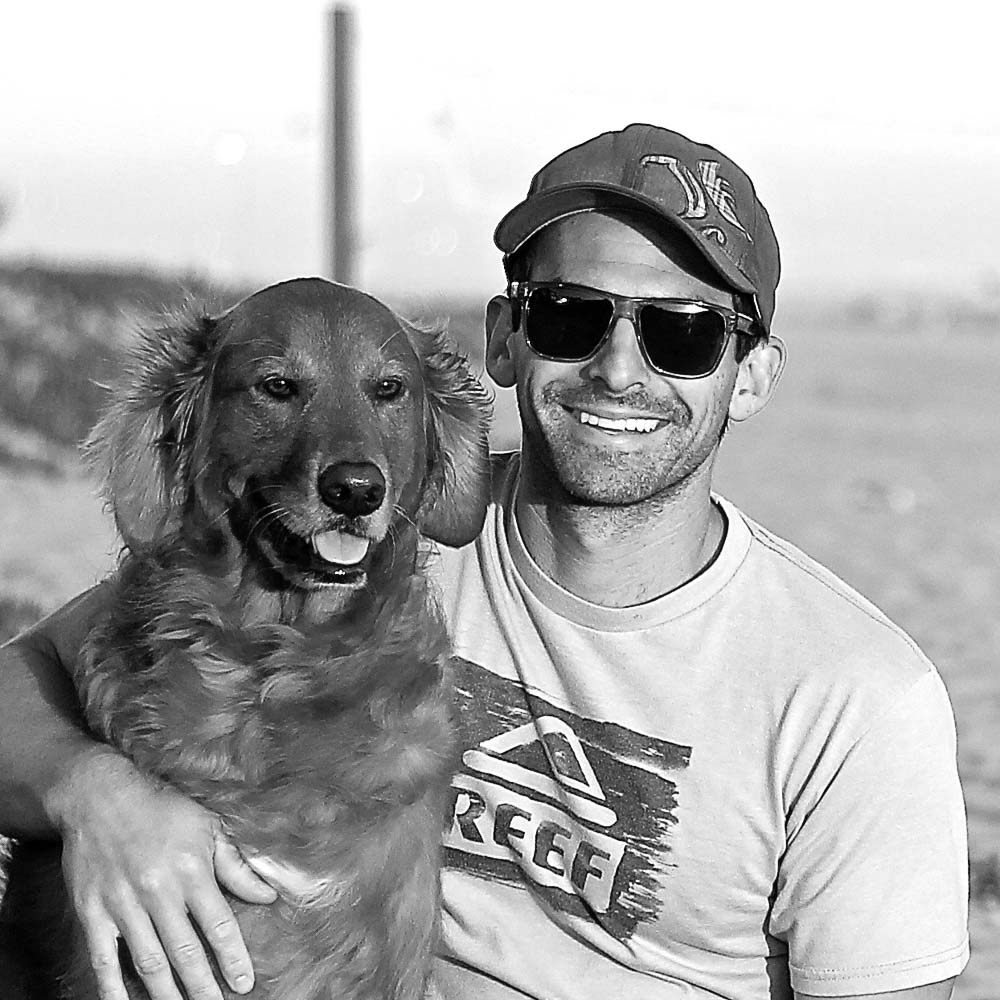
Chapter 1: MYTHS OF WEIGHT TRAINING FOR RUNNERS
Scared of getting bulky? Getting slower? This is the section for you…
Chapter 2: BENEFITS OF WEIGHT TRAINING FOR RUNNERS
Why should we add strength training as runners? Here’s the 3 most important reasons…
Chapter 3: METRICS FOR RUNNING EXCELLENCE
What should you be measuring in your quest to better race times?
Chapter 4: MIDDLE DISTANCE METRICS
If you’re a middle distance running, see what metrics should be on your radar.
Chapter 5: LONG DISTANCE METRICS
See how your metric differ as a distance runner.
Chapter 6: HEART RATE VARIABILITY (HRV) TRACKING
How you can decrease injury and increase performance within less than a minute a day.
Chapter 7: 40 WEEK STRENGTH TRAINING STUDY RESULTS
If you’re concerned about the risks of adding strength training this is a must reach chapter.
Chapter 8: MOST COMMON RUNNING OVERUSE INJURIES
If you run you’ve more than likely had one of these…
Chapter 9: TYPES OF MUSCLE INJURIES
“Is it a strain or a tear? Should I be worried?”
Chapter 10: TENDONS
The Achilles, the Patellar, the Hamstring …
Chapter 11: CARTILAGE & LIGAMENTS INJURIES
The Meniscus, “Degenerate Joint Disease,” & Labrum…
Chapter 12: BONE INJURIES
Stress Fractures & Stress Reactions
Chapter 13: JOINT HEALTH
The Knee, Ankle, Hip, Digits…
Chapter 14: COMMON MECHANISM OF INJURY FOR “OVERUSE” RUNNING INJURIES
“Is it a strain or a tear? Should I be worried?”
Chapter 15: HOW TO PREVENT COMMON INJURIES
Learn the newest theory for injury prevention.
Chapter 16: NUTRITION
Female athletes MUST read this.
Chapter 17: HOW TO REHAB RUNNING INJURIES
If you haven’t recovered from your injury this is your chapter.
Chapter 18: HOW TO RETURN TO RUNNING AFTER AN INJURY
Chapter to come soon… guest writer!
Chapter 19: CRAMPING WHILE RUNNING?
This chapter will give some insight.
Chapter 20: KNEE POSITION IN STANCE PHASE
This chapter will go over proper placement of the Knees at Stance Phase.
Chapter 21: ARM SWING
How important is arm swing?
Chapter 22: RELATIONSHIP: HIP FLEXOR AND EXTENSORS
Learn about the intimate relationship of the flexors and extensors.
Chapter 23: DEEP TISSUE WORK
Learn the importance of a good soft tissue provider
Chapter 24: FOUR REQUIREMENTS FOR RUNNING PERFORMANCE
You need these four aspects in your training to perform at a high level.
Chapter 25: REFERENCES
Read the studies I cited for yourself

If you are running while implementing a weight training program, it will be very hard to get bulky. Why? Scientists have found that running creates an “interference effect” to the bulk. Endurance training triggers a pathway that inhibits muscle growth.(1) After 40 weeks, there is no visible or measurable physiology or body composition changes.(3)
If you still don’t believe me, ask around. Ask some very fast people if they weight train or not. If they do, ask them if they’ve noticed any negative effects. I’ll bet 99% will say no; but that other 1% will say there’s an aesthetic effect they didn’t like, not a performance based one.
Typically, the amount of running volume you do will offset the possible bulk you’d be putting on. That being said, there will probably be some noticeable changes in your upper body and arms over the years with continued weight training that some women may not like.
Developing “stronger looking” arms and shoulders comes with time, but consider this an asset to improve your running. Arm swing is a natural part of running gait. However, we cannot correct mental image hang-ups, so understand these changes happen over years. They don’t sneak up on you.

Resistance training can help you get faster by improving running economy, vVO2max, V02max, and HRmax.
How?
It is especially important to emphasize training reactive-strength. High reactive-strength (Low Load/High Velocity) allows for proper stiffness of the leg, allowing the body to recycle elastic energy from each footstrike.
Granted, there are many types of resistance training; and just like different types of running workouts, each has their goals. Each one can be designed to improve your body’s functionality in unique ways. We will go more into styles of resistance training based on specific goals later.
During race season, only one day a week is recommended for strength training. During off-season, two days a week will still make you faster.
How long does a workout last?
It can be anywhere from 30 minutes to an hour. But it really depends on the style of programming. I like to keep the exercises grouped together in a tight fashion to simulate the fatigue state we encounter with endurance running. If you chose to spread it all out, not only will it take a lot longer, you’ll also lose that neuromuscular fatigue challenge. If you don’t think that’s all that important, think again. It is the first part of the cascade of mechanisms that lead to running injuries. But we will cover more on this later.
Depends on the day and your goals, etc. Programming is a science, but I would say generally that the only way you can get faster at running is to run. The effect of weight training on your running will only come to fruition if you run, so don’t allow a weight training goal to trump your running goals.
If you still think there’s not enough time, I’d suggest this explicit video. CT Fletcher has motivated many people I know… he doesn’t allow excuses to kill his goals. Again it has some dirty words so if that offends you DON’T WATCH this video.
Let’s go through the top three benefits of adding resistance training to improve your running performance.
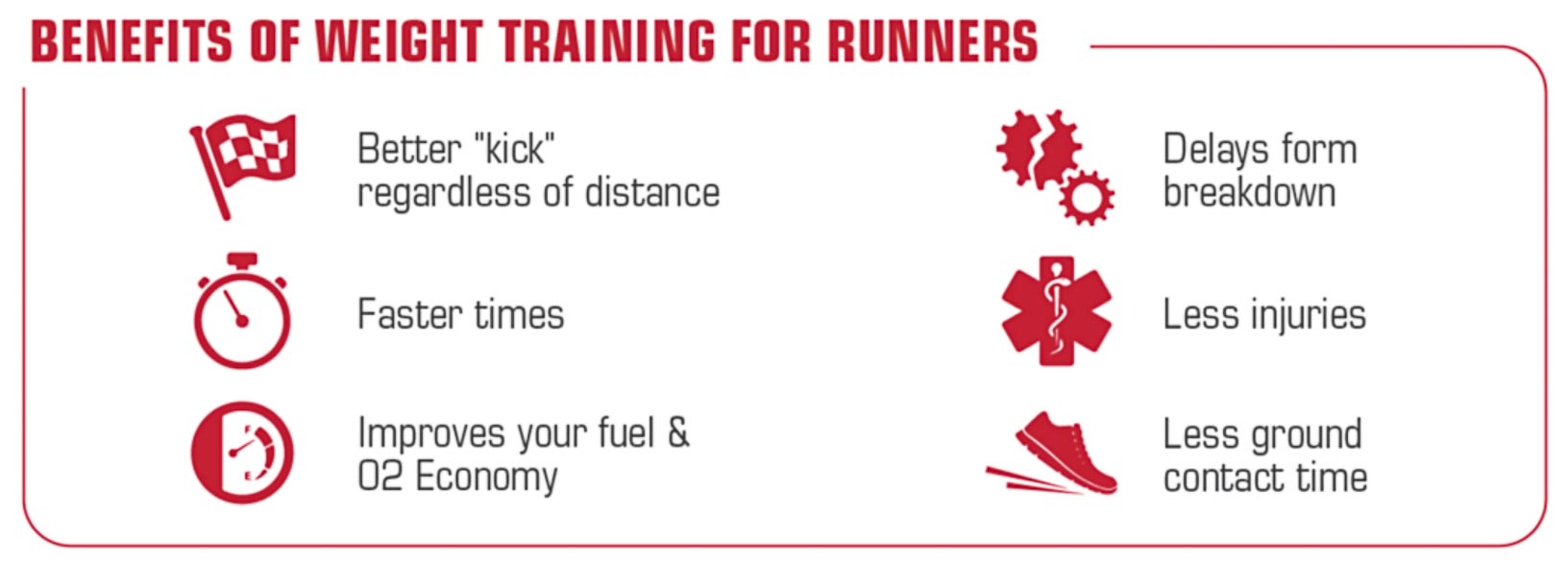
Running economy is an extremely important concept in the running world. If this is the first you’ve heard about it, believe me, you will start to notice it in a majority of credible articles that you read.
Simply put, it is how efficient your body is at using the energy it has. Think of the gas milage of an eco-friendly car versus a huge truck. You want to be the eco-car in this case.
Running economy is one of the top two most important indicators of elite runners. It is composed of many different variables, so I won’t bore you with the details, but know that weight training can increase it regardless of distance. How much better? I’ll show you some research later.
The act of running primarily improves your heart and lung capacity. While both are extremely important, they are only part of the story. Adding resistance training to your running program will lead to less ground contact time, faster times and less injuries. (8)
Let’s break two of these down:
Less ground contact time
Less ground contact time is exactly what it sounds like; just like a cheetah, the faster you move, the more time you spend flying rather than in contact with the ground. Faster paces equate to less ground contact time, so increasing your speed will affect your gait. In addition, faster paces naturally equate less heel strike.
Think about walking in contrast to sprinting. With walking, it is impossible not to heel strike. In an all out sprint, there is a much higher probability that your contact point will shift forward on your foot. Improving your running economy will lead to faster paces and less impulse from the ground which all leads to:
Fewer injuries
Fewer injuries is always a great thing. We will go into the most common mechanism of injury for running later, but research has proven that less ground contact time equates to fewer injuries.
Does this mean running faster lowers the risk of injury?
I can’t honestly answer yes or no, but I can say from clinical experience, I can tell you that I see more knee injuries in slower runners than faster ones. I also see more joint and cartilage injuries in slower runners. Faster runners present with more calf, ankle and foot injuries. Granted, this is not research-based, but it has been pretty consistent over the years.

Weight training improves your neuromuscular recruitment. It’s like a tune-up for your muscles; the better they work, the less gas they burn and the more miles they can go before they “breakdown”.
The better your neuromuscular system works, the better you will be able to run. Gait will improve, form under fatigue will improve and so will the way you feel. It will feel like you have to put less effort into running at your prior pace after implementing a resistance training program.
A majority of the time, the research will not be as friendly about breaking down the language…that’s why you need to read my articles! I’m here to help! Don’t worry, after the definitions, we will tie this all together so you can understand and actually use it.
The three most widely accepted performance indicators are Running Economy, vVO2max and Lactate Threshold.
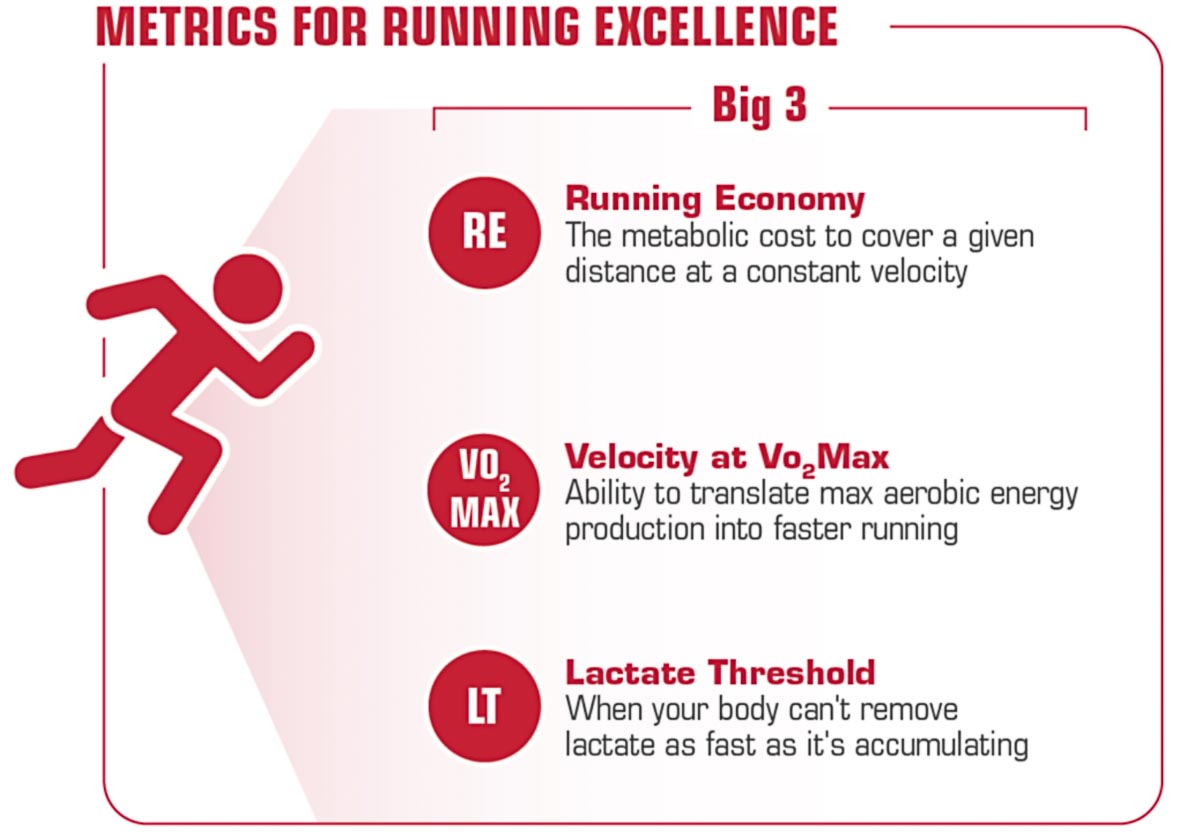
Velocity at Maximal Oxygen Uptake (vVO2max) is the ability to translate max aerobic energy production into faster running.(3)
Lactate Threshold (LT) (17) is the intensity at which lactic acid begins to build in the blood, which is roughly around marathon pace. (16) Competitive runners typically will run around the highest VO2 possible before the bloodstream starts to accumulate plasma lactate.
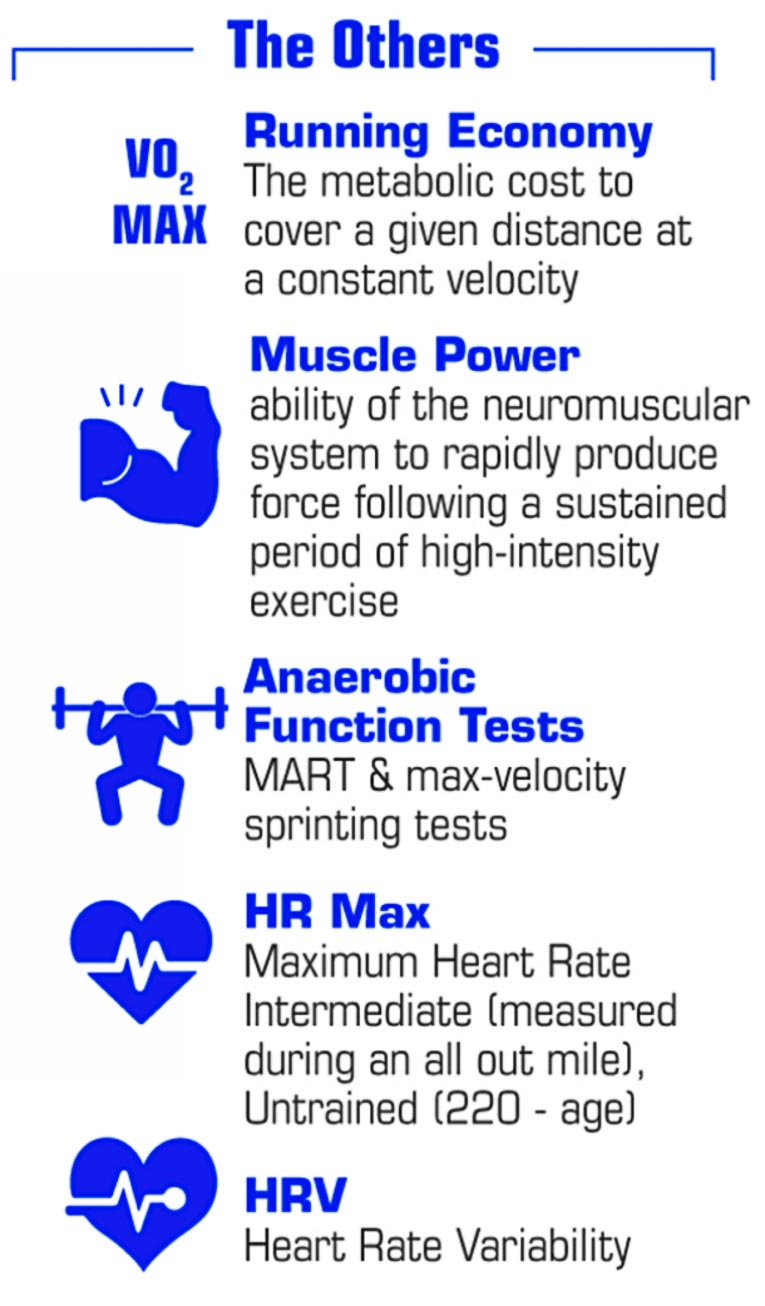
VO2max is the measurement of your body’s ability to consume oxygen within one minute.
Endurance-specific “muscle power” is the ability of the neuromuscular system to rapidly produce force following a sustained period of high-intensity exercise.(7)
Anaerobic Function Tests: vMART & max-velocity sprinting tests.
HRmax = Maximum Heart Rate: Intermediate (measured during an all out mile), Untrained (220 – age).
HRV = Heart Rate Variability is the variation of time intervals between heart beats. More useful than RHR (Resting) and HRmax.
I know these are a lot of numbers and abbreviations. It can be confusing to know what to focus on, so I will break these down even further according to rough distances or events later in the article.
For now, let’s tie all of these measurements together so we can know what we can change.
VO2max garners the attention of many runners and coaches, but a high VO2max does not always equate to a bad-ass runner. It is just a small attribute which can be improved, but is largely determined by genetics. (11)
Did you know two runners with a similar VO2max can perform very differently? The reason for this is the different amounts of oxygen and energy that they use at the same speed. The runner with a more economical use of their oxygen and energy will excel. This point illustrates how running economy allows elite runners to dominate.
Running economy itself doesn’t change too much with speed since what we are measuring is the total oxygen cost to run 1 km. Remember, the total oxygen used doesn’t change much, but the amount of oxygen per minute moving will increase with speed; and since it takes less time travel a kilometer (if running faster), it evens out.
Research is conflicting on Lactate Threshold and how to be efficient at improving our number. Some say we should train at or above threshold pace, some say there is no benefit. Personally, I would recommend going at or above threshold pace if we looking to attain it in a race. In regards to training to improve VO2max, we want to hit range around vVO2max, so I feel Lactate Threshold is similar regardless of the conflicting data.
So, how can we improve running economy?
Let’s start by stating that running long, slow distances will actually result in poor running economy. (12, 13)
So, if you are thinking that a Saturday long distance run combined with a casual jog during the week is going to help you race better, you are mistaken.
The first two sections I’ll focus on that we can do differently (without altering gait and cutting off body parts) are super important, so really understand these. The others are more for your comprehensive understanding, as you may have come across this information in various places.
Intensive training periods?
Yes, intensive periods have been shown to improve running economy in comparison to low-level training periods. Training even at low levels of effort will increase other characteristics important in endurance sports, but only higher effort periods will improve economy. (14)
What kind of intensity improves economy?
vVO2max intervals (15) and temps near threshold (18) have been proven to improve running economy. In addition, training for six weeks using “exhaustive distance training” and “long interval training” (4 minutes on and 2 off) improved economy by 6% when short sprints (under 15 seconds of effort) did not. (19)
Explosive and heavy weight training?
Yes. It has been shown to produce improvement in only a few weeks. (20)
Now on to the others…
Changing stride length?
No. Shortening stride length by 3% has been shown to have no effect on economy, but lengthening stride length by more than 6% has been shown to decrease economy. This leads us to believe their is an optimal range of stride length. (21, 22, 23)
Switching to barefoot running?
Intuitively, a yes. Barefoot running revealed less vertical displacement (upward and downward motion) during running (24), which did yield better running economy. It’s interesting to note that barefoot running also resulted in higher leg stiffness, which produced less injuries and resulted in better use of the elastic energy through the muscles and tendons.
The underlying theory of the study was that reduction of shoe weight would improve economy by requiring less effort to more the leg through its gait.
You said “vertical displacement”; so, decreasing it can improve economy?
Yes, when isolating only vertical displacement changes, the less vertical displacement while running, the better the running economy. (25)
Shorter ground contact times?
I have dug through a lot of research on this, and I’m choosing to leave this section unanswered right now since there is too much uncertainty.
My thought process is that the cost of energy for quicker motion would be higher, but since shorter ground contact times have been shown to lead to lower injury rates and less down time, I think I would lean to the side of less ground contact time at this point in time…regardless of economic expenditure. (STUDY)
What about kinematics of running gait?
Yes, but there are a variety of joint and angle factors that support my answer of yes, even though only one of them shows a very strong relationship across multiple studies.
Less leg extension at toe-off?
How can we obtain less leg extension at toe-off? Modification at two joints can accomplish this: decreased plantar flexion (pointing of the foot) at the ankle and decreased knee extension (straightening of the knee) as we push off.
Why does this make us more efficient?
The theory is that the hip extensors contribute more through better leverage or being in a better point in their length-tension relationship with this modification.
Also, by better use of the hip extensors, I would bank on there being more forward propulsion rather than vertical displacement like we discussed earlier. (26)
Does being heavy make us less efficient?
Yes. When we breakdown the metabolic cost of running, a majority of it goes into supporting your body against gravity (65-74%). The next highest demand is from forward propulsion at 37-42%. The remainder goes into leg swing and lateral balance. (27)
The way I would spin this point is to optimize your weight and improve your running mechanics. I won’t even go into mechanics though, since it is not anything I can give good information on. I can only think of five people off the top of my head who would have better information to give in this category.
Improving arm swing?
Maybe. The studies are conflicting, but we do know that normal arm swing decreases that nasty vertical displacement we spoke about, so I would recommend keep the arms moving. (28) Also, altering arm motion can alter leg motion. It reminds me of someone throwing a baseball with their opposite arm…it looks as awkward as it feels.
What are some easy tips?
Now that you’ve read through everything and your head is spinning, I’ll suggest some easy modifications to improve your race experiences: (17)
- Start adding in continual runs near threshold
- Start adding long intervals (4 minutes on and 2 off)
- Add at least 1 day a week of explosive and/or heavy resistance training (increase to 2 days during off-season)
Adding one or all of these can dramatically increase your race pace within a few months.
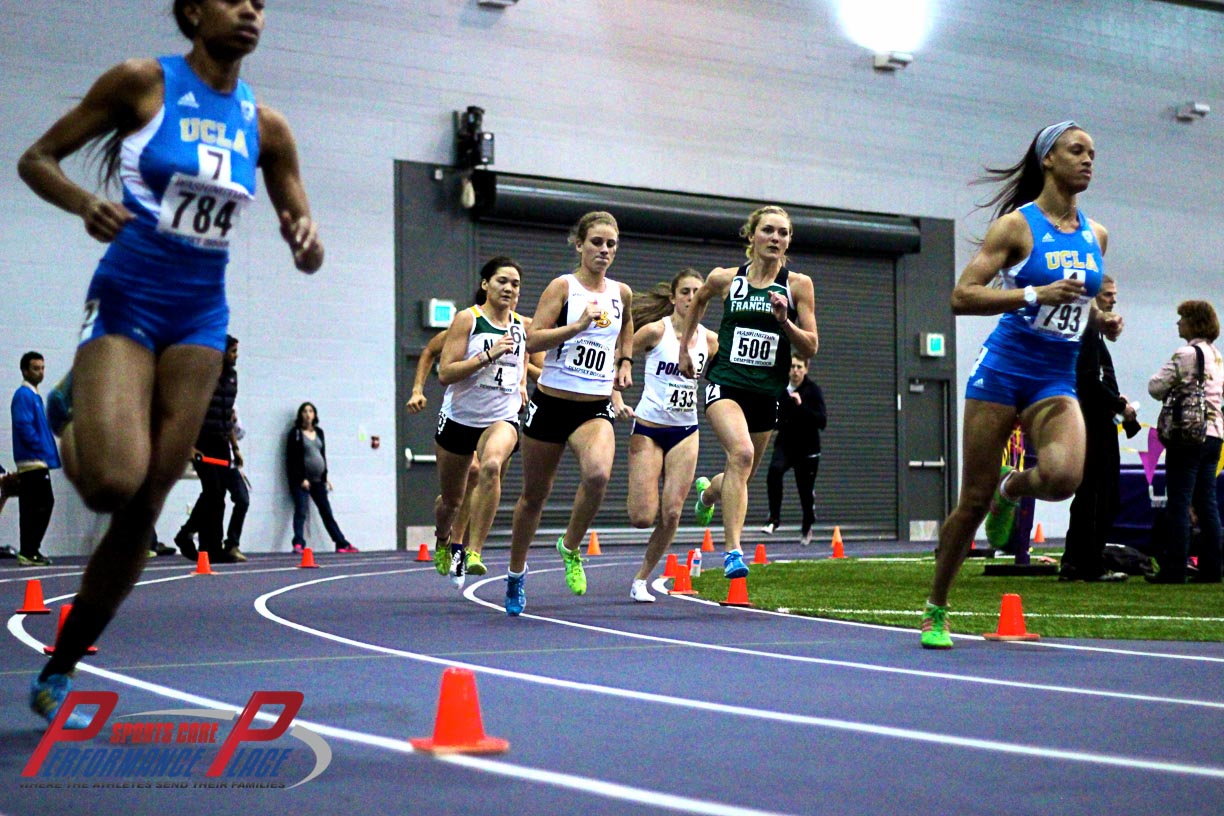
As a middle distance runner, you should be more concerned about the following indicators. If you are unsure if you are a middle distance runner, it is classified as being “beyond a sprint and up to 3000m”.
- Increase Running Economy
- Increase vVO2max
Increasing your running economy and vVO2max will get you more personal records and open up a whole new world of running velocities. Mind blowing!
If you are an untrained runner or don’t know how to measure either of these factors, a great place to start is with heart rate. HR max training can be used for certain training zones rather than vVO2max in unfit or inexperienced runners.
HR max can be measured on an all out mile effort and recorded, but if you feel this is still too advanced, you can start with the older method, 220-age.
For tips on how to improve your running, look at the section ABOVE

- Increase RE
- Increase vVO2max
- Increase Anaerobic Capacity
- Increase Endurance-specific “muscle power”
- VO2max: Minimal or no effect in elite level
For tips on how to improve your running, look at the section ABOVE
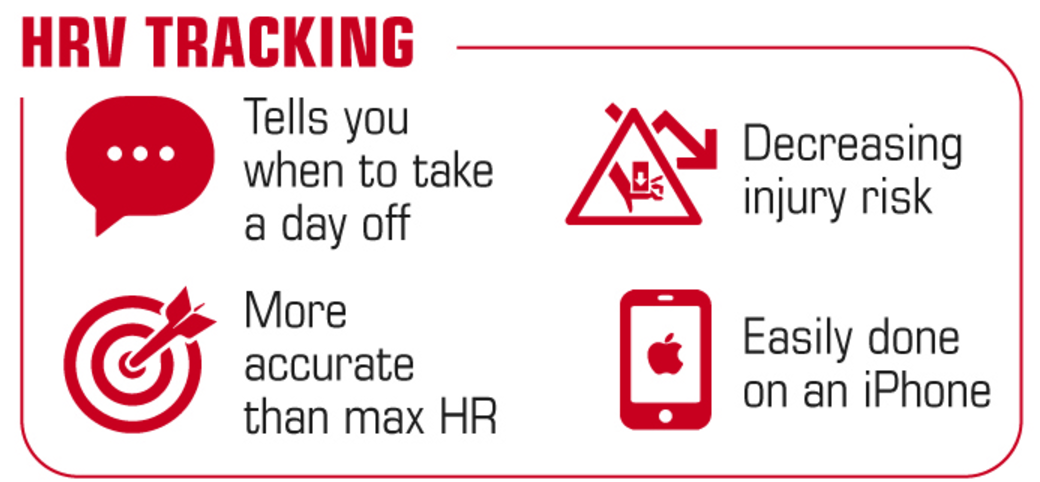
- It can tell you when to plan heavy versus light training days
- It can decrease your injury risk
I know it sounds like I’m full of it, but current research shows a very promising connection between these factors. (29) The great part is you can track it with only 60 seconds of your time every morning when you wake up. Phone apps can now tell you your HRV and what lifestyle changes you can implement to raise it.
You can measure max HR with an all out mile effort and measure your max during that effort, but that method isn’t really practical on a daily basis.
HRV is a very reliable measurement.
Some apps you can use are:
- HRV4Training (uses your camera infrared ability to take your pulse)
- Whoop (more expensive and uses a wrist band for more elaborate tracking)
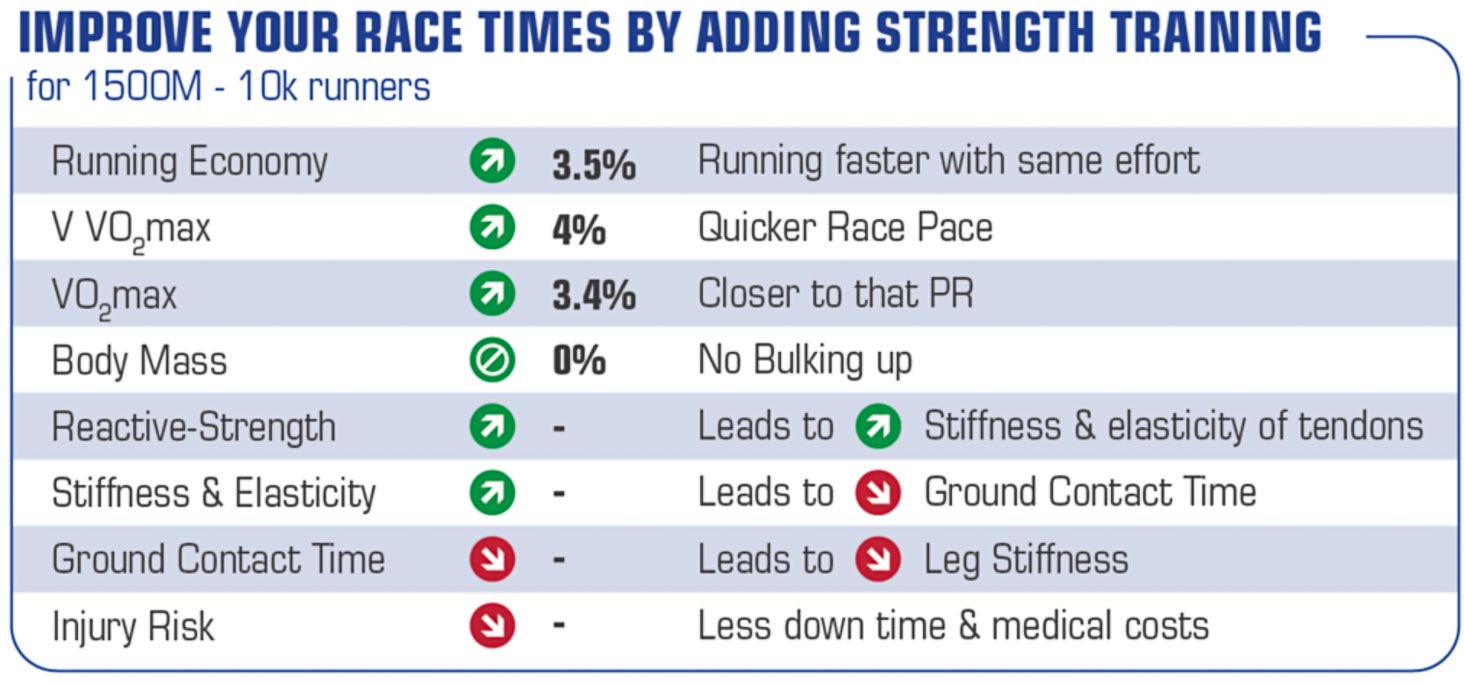
Also note the increase in reactive-strength resulted in an increase in leg stiffness, which decreased ground contact time and lowers your risk of injury.
There was nothing negative found in this strength training program.
Strength training will make you faster, more efficient and less prone to injury… where’s the hang up?
Weight Training Suggestions
- Start at least six months before race season
- Modify sets, reps, and weights often for continued efficiency
- Use more complex motions (ie: Deadlift) for time efficiency rather than single joint exercises (ie: Leg curls)
- Offseason: 60 mins 2x/wk with emphasis on High Load/Low Velocity
- In-season: 60 mins 1x/wk with emphasis on Explosive-Strength & Low Load/ High Velocity
- For safety and efficiency, start with slow complex motions before adding explosive or high velocity exercises (4)
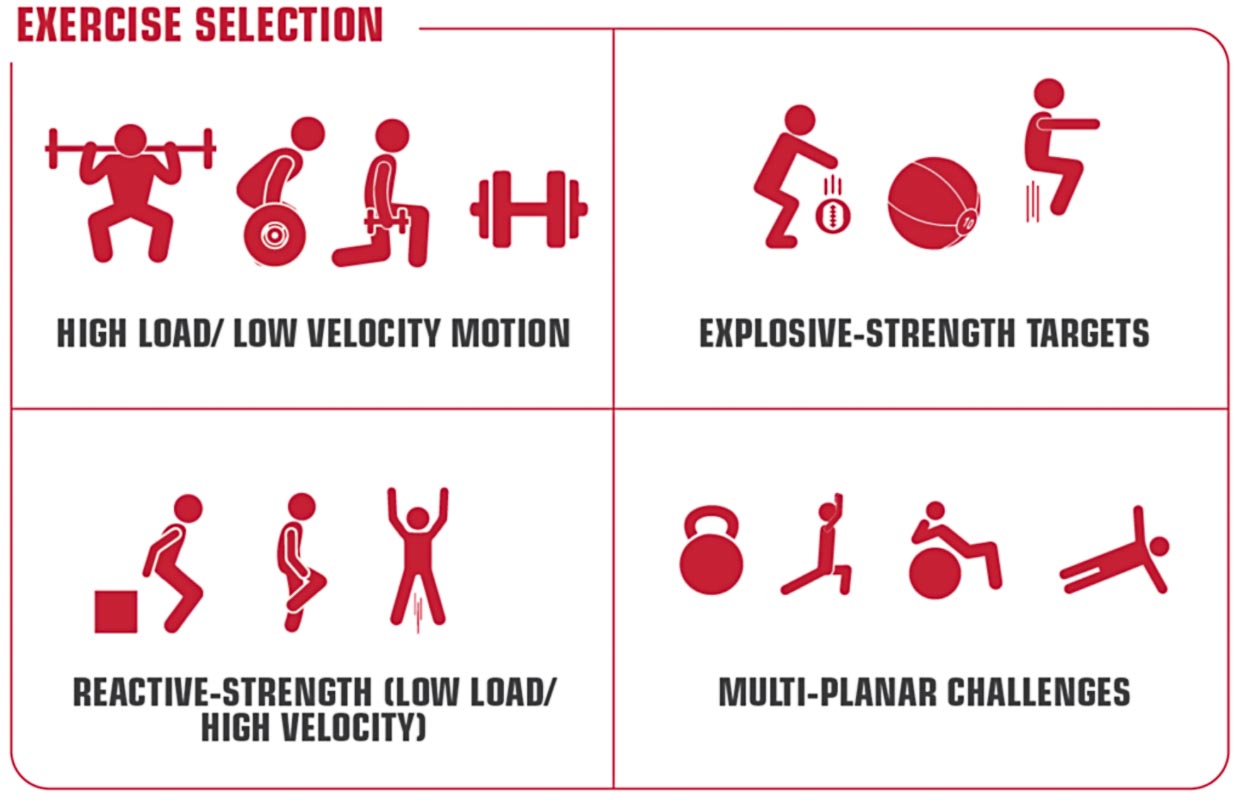
High Load/Low Velocity Motion targets Max Force Development:
- Back Squats
- Deadlift
- RDLs
- Split Squats
- Step Back Lunges
- Single Leg Squats
Explosive-Strength targets reflex Force Development and Power:
- Jump Squats
- Medball throws
- Med Ball Slams

- Depth Jumps
- Continuous countermovement jumps
- Single leg hops
- Bounds
Multi-planar Challenges for Injury Prevention:
- Lateral Hop holds
- Lateral Lunges
- Core work
- Airplanes
- Rotational Squats
- Anti-Rotational Pallof Press
- Bird Dogs
- Deadbugs
- Kettlebell Carries
- Form Drills
- Active Loading
- Patterning, etc.
More importantly than just the name of your diagnosis, read through the remaining sections of this article to understand how and why your injury occurred.
Most muscle, joint, tendon, ligament and cartilage injuries from running stem from the same, underlying problem. I’ll go over this in full detail in the section on Mechanism of “Overuse” Running Injuries.
Here’s the top running injury list (a comprehensive article demands a quick list at the very least):
In fact, the lack of clarity of the term “strain” amongst many healthcare providers spurred the Consensus Statement On Classification Of Muscle Injuries (2012).
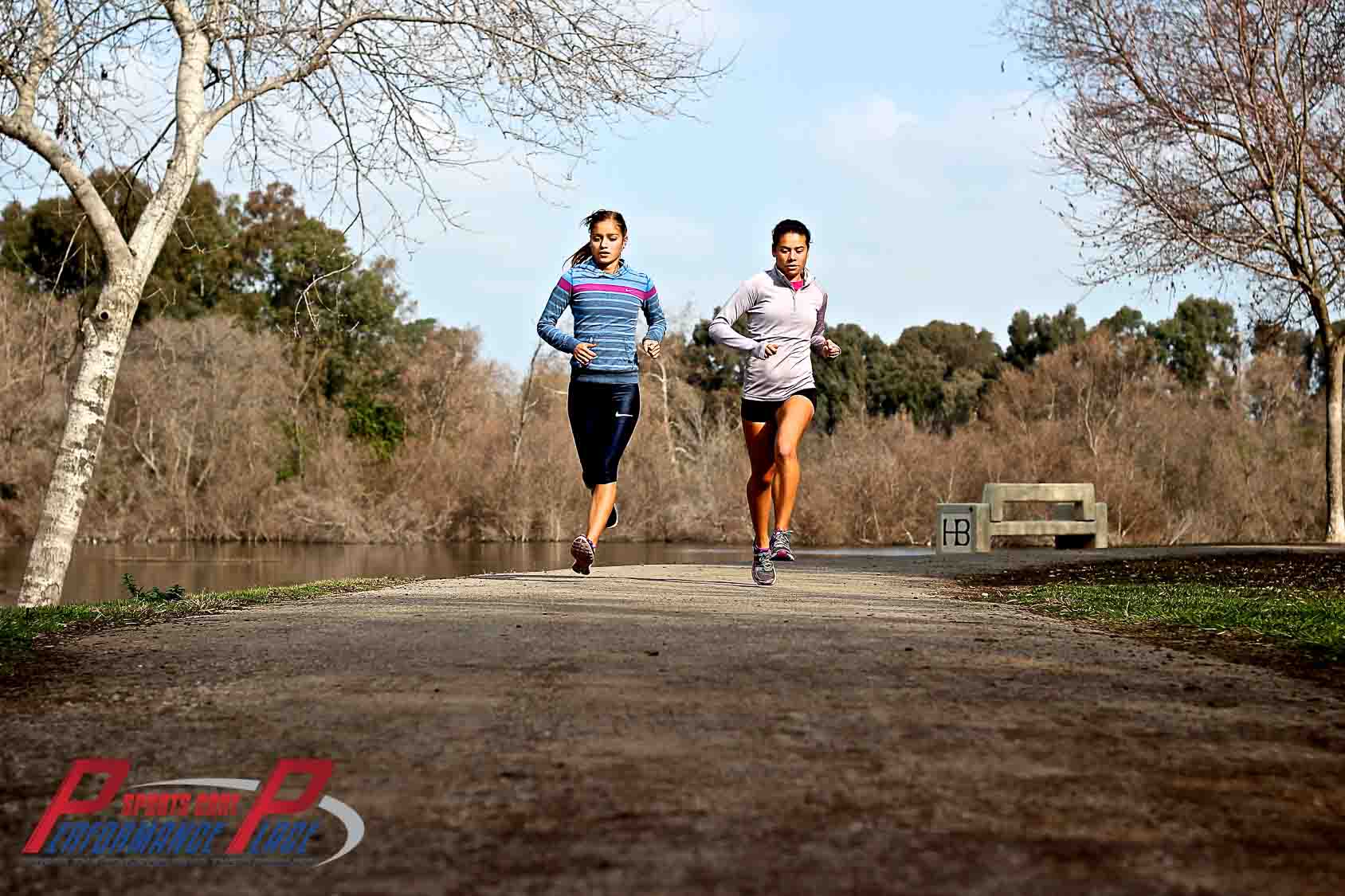
–FUNCTIONAL (Negative MSKUS & MRI) Stoller (2007, MRI- based)
- Type 1: Overexertion-related Muscle Disorder
- Type 1a: Fatigue induced
- Type 1b: DOMS
- Type 2: Neuromuscular muscle disorder
- Type 2a: Spine-Related
- Type 2b: Muscle-Related
– STRUCTURAL MUSCLE INJURY (Positive MSKUS & MRI) Stoller (2007, MRI- based)
- Type 3: Partial Muscle Tear
- Type 4: (Sub) total tear
DIRECT MUSCLE INJURY
Bump or Cut: Contact-related
Indirect – Non-contact
Direct – contact or laceration
For the remainder, let’s get away from direct muscle injuries because they are more or less due to “luck” as I like to say. The indirect ones are the ones that we can control. They break down further into two, major categories:
Functional
Structural
This is where it gets interesting.
A functional muscle injury won’t have a MRI or ultrasound finding, yet the runner has increased muscle tone or firmness.
You’ve probably known several people who’ve complained of muscle “tightness” that have come back from their doctor’s office with a normal MRI? It’s extremely common.
Some runners are told it’s all in their head; others decide it’s real, but run through it since it’s “normal” on MRI or ultrasound. This was the real no-man’s land when it came to classification of running injuries before this statement. I’ll break this classification of injury down even further in a few minutes.
The second grouping of the indirect muscle injuries is structural. This grouping is what we are used to hearing about. It’s when the muscle has an actual visible tear on MRI or ultrasound. These were our old Types 2 and 3, but now a partial tear is a Type 3 Structural Muscle Injury, and a complete tear is now called a Type 4 Structural Muscle Injury.
These Type 3 and 4 Structural Muscle Injuries, require a little bit more TLC and management. Again, I discuss them for completeness sake. From here on in this article, I won’t be focusing on them anymore.
Let’s move back to the “fun zone”: the Indirect Functional Muscle Injuries… I know it’s becoming a mouthful :D!

- Type 1: Overexertion-related Muscle Disorder
- Type 1a: Fatigue induced
- Type 1b: DOMS
- Type 2: Neuromuscular Muscle Disorder
- Type 2a: Spine-Related
- Type 2b: Muscle-Related
For most experienced runners, we don’t question DOMS as being an injury of any sort, but the fact of the matter is that it’s still a small amount of muscle damage undetectable to MRI and ultrasound.
During DOMS, we still have acute, local inflammatory response from eccentric loads of training. It typically self-resolves within a week or less and is usually painful at rest.
Type 1a: Fatigue Induced, while still undetected by imaging, is painful with motion. It can feel dull, achy or stabbing in nature, and if left untreated, can lead to a structural injury. It’s currently a type of injury that requires more studies to elucidate.
Now, we are getting into the good stuff: Type 2: Neuromuscular Muscle Disorders are why a strong majority of runners feel pain. Let’s start with Type 2a: Spine-Related.
Type 2a: Spine-Related is just how it sounds. Your “muscle injury” is actually due to a spinal cause. Every muscle has the ability to contract and relax via the electrical impulse from a spinal nerve. Since the signal comes from the spine, it’s logical to assume that if the spinal nerve is sending too much “electricity”, the muscle will be “turned on too much”, creating increased tone or “tightness”.

- Disc injuries
- Spinal Stenosis
- Facet Syndrome
- Lack of trunk endurance
- Ambient back motion when running
- Hip drop
And the list could go on. Please note: there doesn’t have to be back pain at all to have an effect on the nerve.
Hip drop is a gait finding which can put light pressure on a nerve root, creating distal “injuries”. The common theory on how to limit a Type 2a: Spine-Related muscle injury involves creating stiffness of the trunk while optimizing function and mobility of the hips and midback.
On the flipside of the coin, sciatic nerve pain can create high muscle tone in the hamstring and/or calf, but that doesn’t mean the calf muscle is torn in any fashion.
Uncorrected in the long term, this typically results in a runner who depends on their strong leg to supply power. The secondary development of compensatory gait changes then produces injury to the healthy leg.
How long does it take for the compensatory injuries to develop? It can be quick; even a matter of weeks with an altered gait can have a negative effect.
An MRI on the muscle itself will show no tears, only fluid within the muscle in question.
The Type 2b: Muscle-Related category is necessary because we prescribe treatment plans slightly differently for them compared to a Type 2a: Spine-Related muscle injury. Type 2b are a little more complicated to understand, but it’s essentially where a muscle that isn’t doing its job signals to the muscle in question to increase its tone/tension.
This situation typically occurs in muscles with opposing actions. Here’s an example:
If the hip extensors (gluteus maximus and hamstrings) are not “firing” at full force, they signal (through the alpha motor neuron) the hip flexors via reciprocal inhibition to get tight.
The concept of reciprocal inhibition is where the central nervous system tells one muscle to contract at the same time it tells the opposing one to relax. This is how we are able move the hips forward and backward. If both the hip flexors and extensors were contracting at the same time, our hips would be locked into an isometric contraction. The hip joint wouldn’t move.
Thus the issue with Type 2b: Muscle-Related muscle disorders is they stem from the surrounding muscles. I dare say this injury pattern is the strong majority of what we see with runners.
Type 2a: Spine-Related and Type 2b: Muscle-Related are by far the two most common reasons for running injuries. We sometimes call them “overuse” injuries and say they build up with scar tissue, but is the remedy just tissue work?
Logically, if the painful muscle is tight from the spine or another muscle, we have to stop the CAUSE and address the scar tissue locally, but don’t just address one part of the injury please! That thought process is old news. Let’s address the CAUSE AND EFFECT.
Lastly, we will address the Structural muscle injuries we spoke about way up higher in the beginning of the article. This is where there has been enough damage to the muscle to create a visible tear on an MRI or Ultrasound.
This happens when we allow the Type 1a, Type 2a, and Type 2b to occur too long. Positive imaging findings are not always painful either. Please keep that in mind.
With that being said, you can still run after sustaining a structural muscle injury… it just takes a little bit different treatment plan.
We can generally break tendon injuries into three phases based up the Tendon Pathology Continuum:
- Reactive Tendinopathy/ Early Tendon Dysrepair
- Tendon Dysrepair
- Degenerative Tendinopathy / Late Tendon Dysrepair
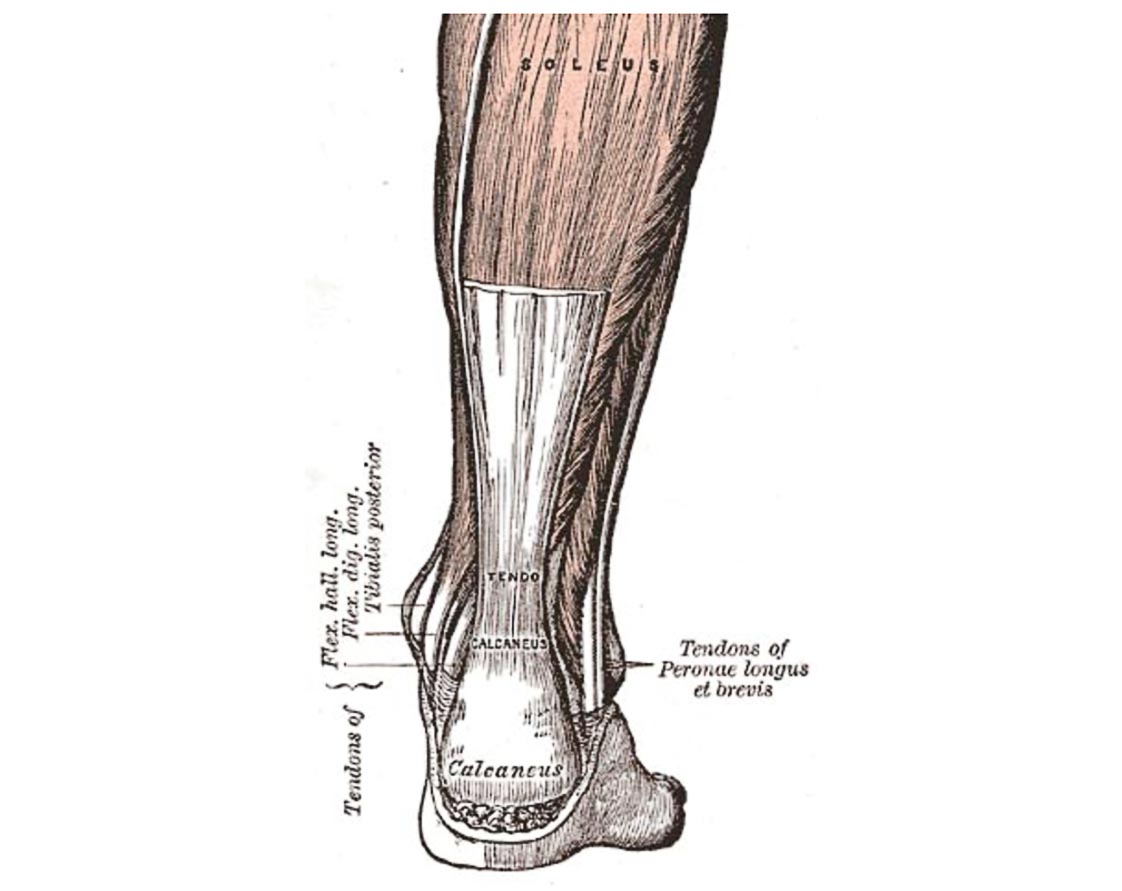
A reactive tendinopathy occurs from a spike in training load. This can occur due to direct trauma to the tendon (as in the foot) or from an indirect effect, which would be loading to the tendon (as in the Achilles).
This typically occurs in new runners beginning their journey, seasoned runners adding a new type of workout to their routine (hills, sprints, speed work) or runners coming off of an injury/ inconsistent training volume (chronic or acute volume).
Most runners think this is an inflammatory response, but we have found in the labs, the process doesn’t match that of a typical, acute inflammatory response. The changes within the tendon are thought to trigger collagen remodeling in response to the mechanical load it was subjected to.
“A short term adaptation to overload that thickens the tendon, reduces stress and increases stiffness” – Cook and Purdam
Plan of Attack: Load Management, Reduction in Frequency and Intensity of Tendon Load, Avoid Stretching, Isometrics in uncompressed positions.
Long-term Outcome: Can return to normal if overload is reduced and sufficient time is given between loading.
PHASE 2: Tendon Dysrepair
The tendon dysrepair phase occurs in runners who decide to ignore what their body has been telling them and do not address the tendon injury at the reactive-tendinopathy phase. The tendon becomes chronically overloaded.
It is possible to reverse this, but the gross negligence of the athlete or programming is really to blame in these cases. You need to properly manage your soft tissues or you won’t be running healthy for long.
Plan of Attack: Load Management, Soft Tissue Rehab, Joint Mobilization, Heavy Load Strength Training, Eccentric Exercise.
Long-term Outcome: Some reversal is possible if load is reduced initially and there is exercise application to stimulate matrix structure.
Although the word “degeneration” sounds as if it applies to older athletes, that’s really far from the truth in many cases. Middle-aged runners down to runners in their mid 30’s can advance to this phase of tendon injury very quickly by ignoring what their body is telling them.
It sounds like I’m saying rest is needed, but it’s really more complex than that. I don’t typically tell people to not run and certainly not to rest, but there are treatments/rehab you should be doing in this phase of tendon injury that most people don’t do until they seek care of a good sports medicine provider.
In this phase, the tendon is grossly incapable of tolerating the load it’s subjected to while running. The collagen of the tendon is disorganized (compromising tendon strength) and the cellular matrix continues to breakdown.
Upon examination, we find these tendons are swollen, nodular and painful. Rupture is possible due to the lack of loading ability.
In this phase, the matrix begins to breakdown, increased vascularity brings new blood vessels and nerve growth with it. The current theory states that the “pain is from nerve in-growth” (Magnusson, et al 2014), not inflammation.
Plan of Attack: Heavy Load Strength Training, Eccentrics, ESWT, Soft Tissue, Joint Mobilization, Rehab, Regenerative Cell Therapy.
Long-term Outcome: Little Capacity for reversibility.
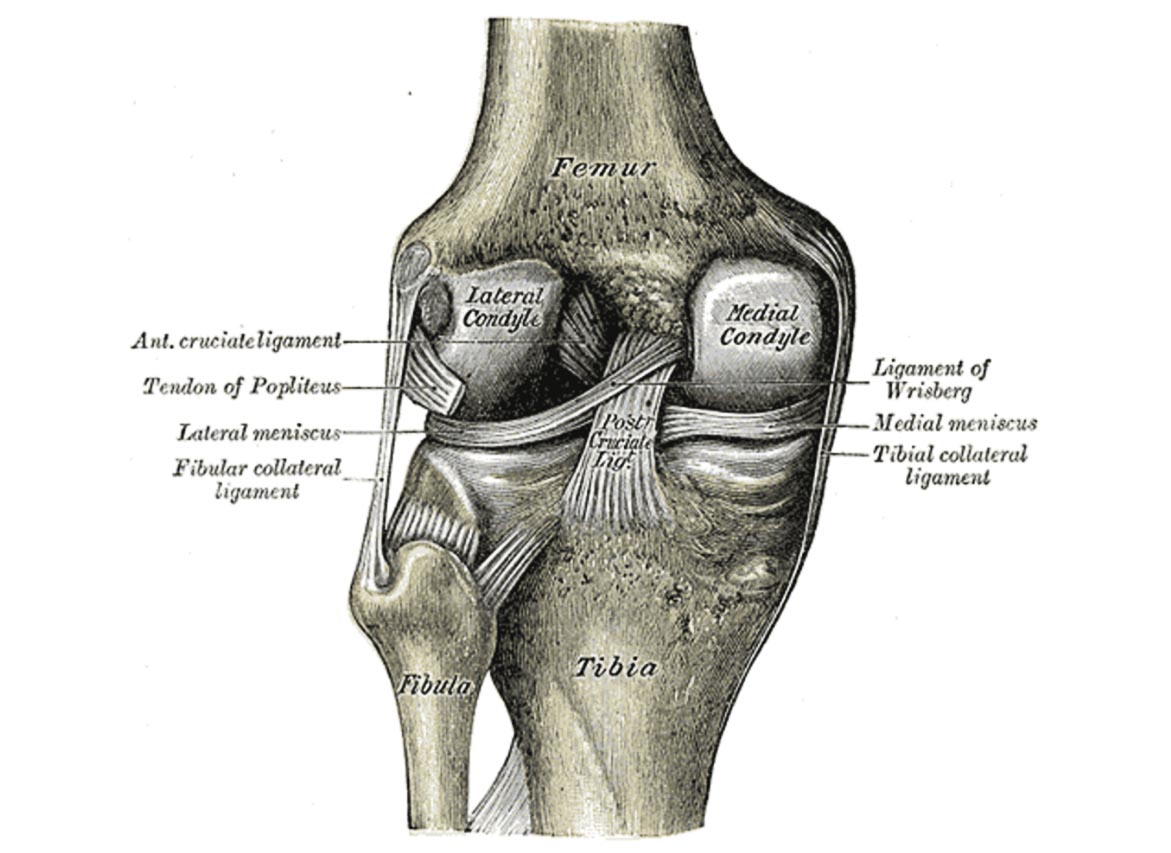
Over the years, studies have debunked the myth that running wears your cartilage. We’ve clarified the theory to say, “Poor running and programming wears down your cartilage.”
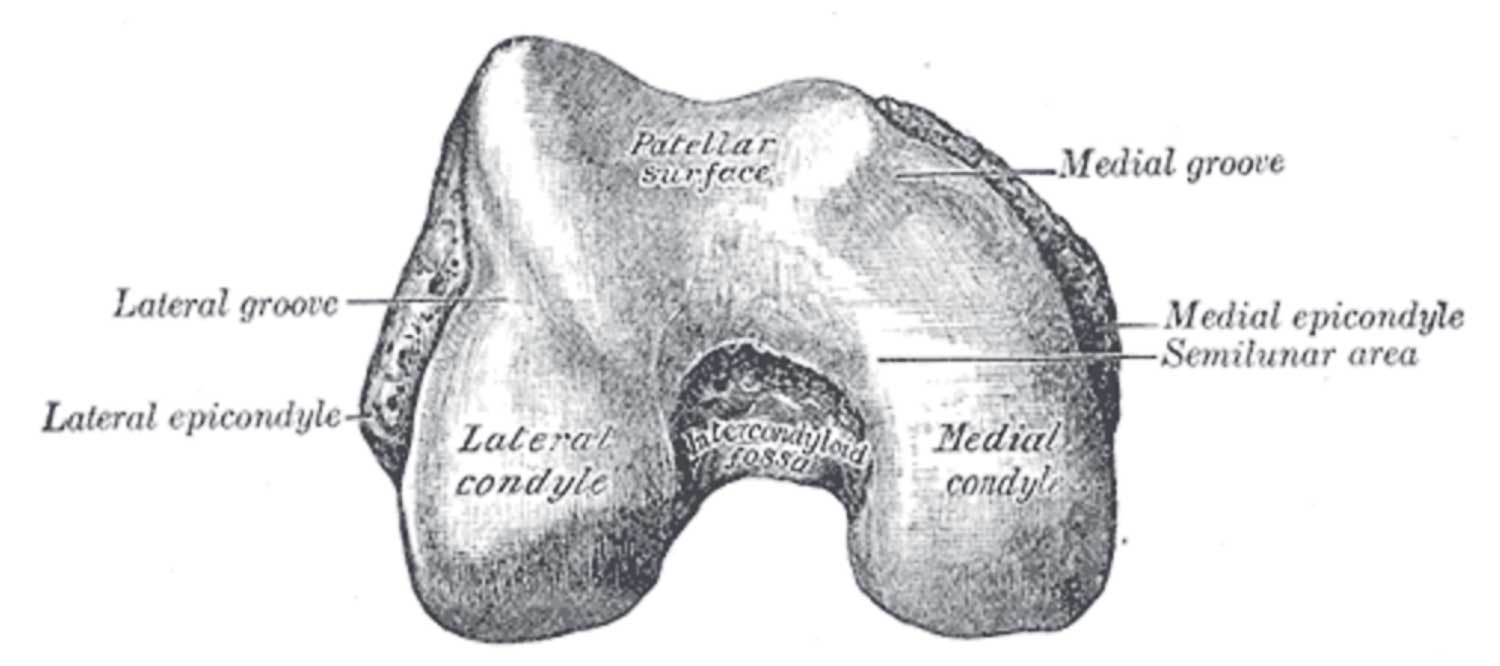
The two most common reasons for bone injuries in runners are from:
- Food intake
- Increased in volume/ frequency
While sources differ, most estimates say that 74% of female runners have an eating disorder. Make sure you speak with a coach if you have experienced a bone injury with good programming.
The sliding scale varies joint to joint.
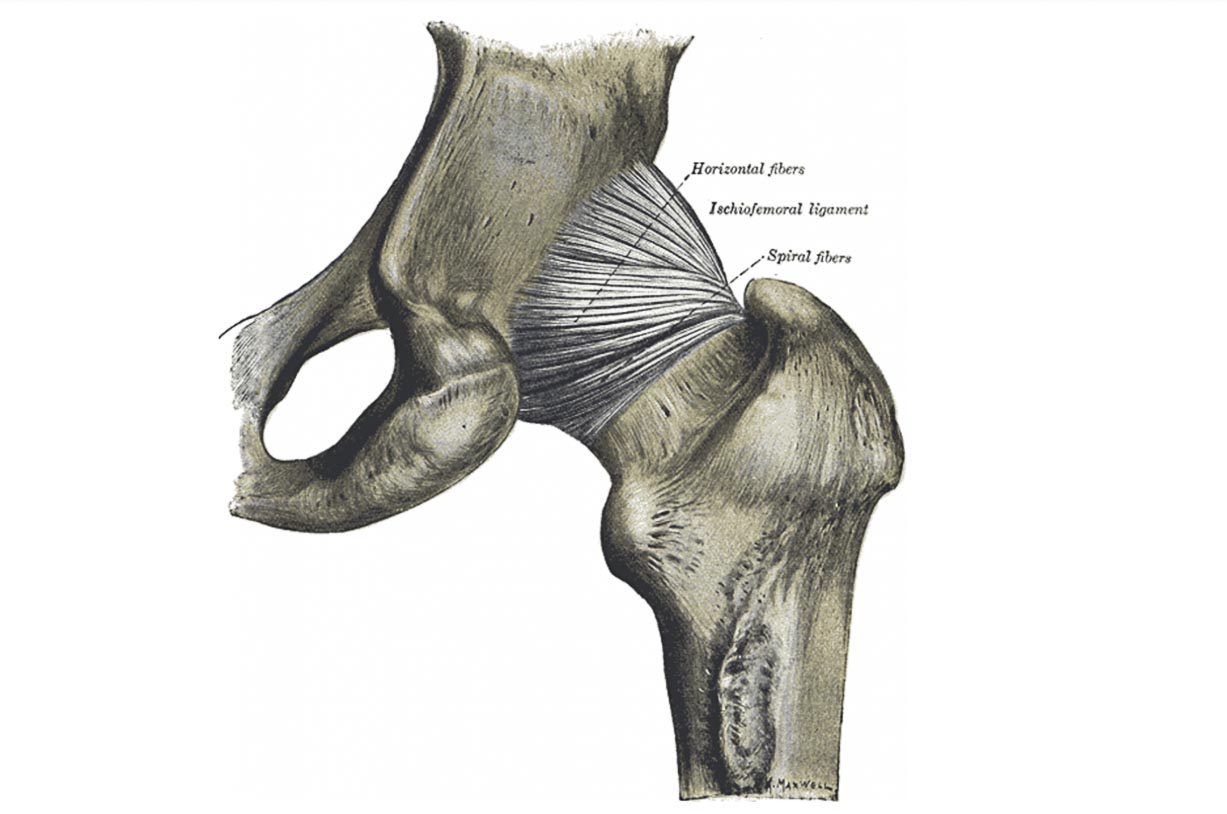
- Bones
- Ligaments
- Muscles
- Tendons
- Cartilages
- Nerves
That’s basically everything, right?
Joints can become pathologic when they develop local changes. Osteoarthritis, labral tears, altered neurological function and ligament tears are a few reasons a joint could move differently than designed. You may be wondering what we can do to restore mobility or stability to the joint? Well to be honest, in some cases you can and others you can’t.
His question to me was, “When will my hip be able to move normally?”
My response was, “Do you have any restrictions in your hips that decrease your athletics currently?”
“No.”
“To be honest with you, I don’t think we’ll get any more hip range of motion minus having a replacement, but why would you want a replacement if you’re able to do everything you need to do in life? I think the best we can do with your bony pinch point is to get you the best function from the hip motion you still have and create an extremely stiff trunk.”
He was fine with that answer. I think everyone needs to understand there is a risk and reward to everything in life. The bony growth in his hip doesn’t allow certain motions. We can’t push through a “hard-end feel”, and he’s been performing better than he has in years. I think this is all we can ask for in cases of permanent joint fixations.
This is one of the most important sections in this article mainly because shows the cascade of events that lead to the majority of running injuries that you can name off of the top of your head.
- IT Band Syndrome? Yes
- Runner’s Knee? Yes
- Plantar Fasciitis? Yes
- Hip Impingement? Yes
- Low Back Pain? Yes
I could keep going, but I won’t. I think it’s important from this point forward to understand that all types of injuries have a grading process. An example is a muscle injury. The CONSENSUS STATEMENT ON CLASSIFICATION OF MUSCLE INJURIES (2012) demonstrates this principle in their classification of an Indirect Muscle Disorder/Injury (type 1-4). This Indirect or “overuse” category is the strong majority of the type of injuries many runners experience.
Grades 1 and 2 “overuse injuries” are actually classified as Functional Muscle Disorders. If you don’t know what I’m talking about, you didn’t read the whole section on muscle injuries.
The opposite of a Functional muscle disorder is a Structural one. “Structural” muscle disorders are grades 3-4, and are what most people imagine when they visualize their muscle injury. They think of it as being partially torn or strained. Strains are actually interstitial tearing of muscle.
You’re probably thinking, “get to the point.” So, here we go.

How can we halt the process? Keep reading and we will go over it all.
As you can see in the image, the epicenter the trunk, or core, as you may know it. From this point on in your life, I strongly suggest you stop using the term “core”. The term is a catch-all, junk term that has many definitions. I would suggest you start using the term “trunk” or “trunk stabilizers.”
Back to the image. Notice the “Swayback” appearance. Some therapist will can this “Lower Cross Syndrome,” which is fine in my book. This posture tends to increase as people get tired: midline stabilization decrease, breathing becomes labored and gait degrades.
This degradation of posture triggers the following cascade of changes when you’re running:
- Pelvis Tilts Forward
- Hip Internally Rotates
- Lower Leg Internally Rotates
- Overpronation of the Foot
These changes can cause all of the following “overuse” running injuries:
- IT Band Syndrome
- Runner’s Knee
- Hip Flexor Syndrome
- Plantar Fasciitis
- Achilles Tendonitis
- Low Back Pain
- SI Joint Pain
- Sciatic Nerve Pain
- “Loss of Pop”
- “Loss of Power”
Without going into each injury independently, let’s generalize the mechanics of these injuries and summarize with these highlights. Changes in gait, posture and single leg stance lead to:
- Poor spinal position via poor torso endurance
- Areas that normally don’t pinch, start to pinch
- Soft tissues lose their proximal stabilization leading to altered function
- Joints lose their proximal stabilization leading to altered functional range of motion
- Muscle/ tendon complexes have altered length-tension relationships
- Lower leg stiffness decrease to injury
- Running economy decreases leading to increased load on tissues
I maybe missing something, but I think that should cover most of it. If you have further questions on this, check out my Podcast topics or email me to cover the topic.
- Develop high trunk stiffness and endurance
- Increase active hip range of motion
- Repattern poor quality movement
- Improve the runner’s ability to keep all of the above when running sub-max effort
- Retain steps 1-3 with max effort and increase resistance to neuromuscular fatigue
Granted, there’s different ways that injury prevention can be broken down; there’s many ways to skin a cat. I think this fundamental sequence of developing a stiff trunk, hip and spine dissociation and bringing that to the sport will serve most of the readers well.
Here’s some other prevention topics we may address in the future:
- Overexertion/HRV
- Tissue Degradation
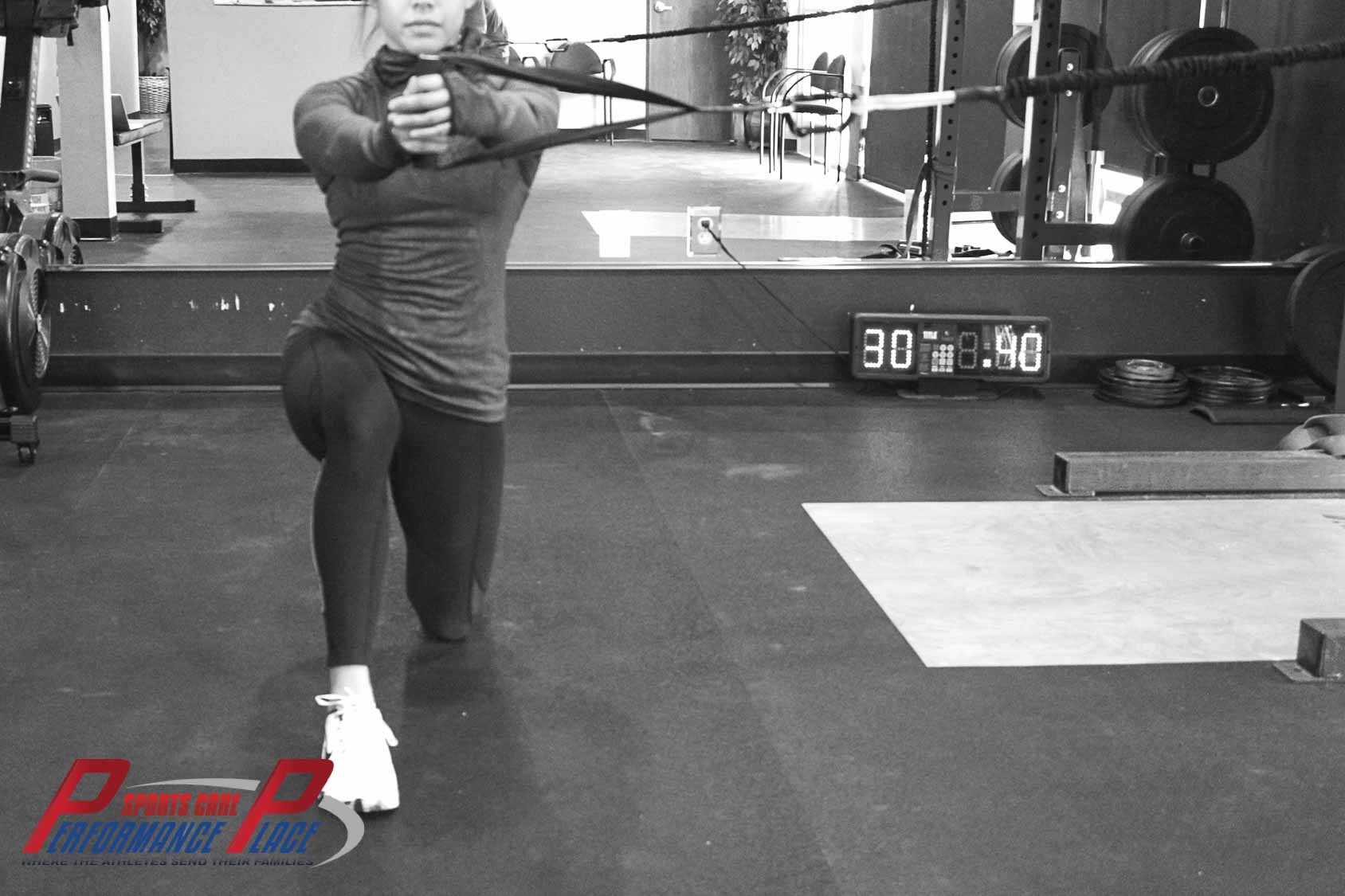
- Don’t focus on passive stretching (Moreside and McGill, 2013).
- Improve proximal stiffness through drills
Don’t focus on passive stretching
The flexibility many runners seek to gain through stretching may be driven by no more than the “feeling” of perceived tightness. The feeling of tightness isn’t the same an a measurable deficiency of normal range of motion. If we have a normal passive range of motion, I personally don’t suggest stretching the “feeling” of tightness.
What can we do instead?
Improve the ability of the hips and core to properly work in unison which greatly improves how your hips, legs and back muscles feel and as well as your functional range of motion.
One study in 2012 concluded that passive hip range of motion can be greatly improved by performing core endurance exercises in addition to exercises targeted at working on dissociation of the spine and the hips.

Core endurance exercises can include, but are not limited to:
- DeadBug
- Birddog
- McGill Curl-up
- Stir-the-pot
- Pallof Press
- Side Bridge
Exercises for emphasising dissociation of the spine and hips can include, but are not limited to:
- Stand and Reach
- Lunge and Reach
- Cross-over Squats
- Airplanes
- Windmills
- Turkish Get-ups
It depends on how much motion each runner needs. And this is very dependant on the individual’s body geometric, development and speed.
Speed is a huge factor in gait amplitude. Consider the whole debate with heel striking. Now think about walking. Your forward lean has a ton to do with your ability to keep your foot under your center of mass.
Get up and walk right now, then come back to read the rest.
Did you heel strike?
I bet so. It isn’t physically possible to walk and not heel strike. As we increase speed to an all out sprint we end up with more forward lean and contact onto the midfoot. Imagine sprinters out of the blocks…
I know we took a slight tangent, but back to the topic of not focusing too much on flexibility…it will come as you improve your core endurance and ability of your spine/pelvis/hip complex to work well.
Final note: Passive stretching WILL increase your range of motion, but flexibility without control is a recipe for disaster. We should always target to enhance our body’s ability to control the range of motion we have. That won’t come with passive stretching.
The body is very adaptive. Designing drills to teach the brain/body connection to become stiff in a non-fatigue state is a great start. Neuromuscular fatigue is exactly what it sounds like: the system comprised of both the neurological system and the muscles gets tired. So tired that it eventually gives out.
Form degradation begins at the top and moves down the body, starting with the once stiff-lumbar spine. Distal injuries occur when we lose our battle with fatigue.
How can we train to prohibit form degradation with fatigue?
Once perfect form is achieved in a non-fatigued state, we can gradually move to a more fatigued challenge. Practicing core stiffness in a fatigued state is much more challenging and transfers over to your running. I have examples of exercises in this section of the website.
I call this “taking small doses of venom.” Similar to how our body reacts with snake anti-venom (derived from venom itself), the body’s neuromuscular system will remember the “venom” in the drills and learn to combat it when running, leading to fewer injuries.
- Squats
- Box Squats
- Lunges
- Single Leg Squats (pistols)
- Wall Wedging (lateral or forward)
- Kettlebell carries
- Plyometric drills
Funny, it looks like a bunch of typical exercises, doesn’t it? Exercises don’t have to be to complicated to be productive when used in this fashion. Body weight exercises are a great idea. A bad idea would be a 1 RM deadlift or back squatting till near failure.

Start from two legs to one, unloaded to loaded with light resistance, slow to quick, and weighted in the center of the body to weighted toward the sides. Kettlebells are great tools to use in this situation.
Programming is very dependant upon the athlete. Someone who can’t squat with perfect form wouldn’t be advanced to a pistol squat. An athlete demonstrating neuromuscular fatigue unweighted will not be allowed to touch weight. This is where a progression becomes important.
If you’re unsure about this process, just email me and I can direct you to some great coaches.
However, I will speak here about the issue surrounding the problem of the Female Athletic Triad (FAT). If you or your female athlete has all three of these seemingly unrelated issues, you need to see a professional for nutritional and possible psychological counseling.
- Energy Deficiency with or without Disordered Eating
- Menstrual Disturbances/Amenorrhea
- Bone Loss/Osteoporosis
Here are some of my general guidelines for athletes of any sport:
- Balanced diet: (40/30/30) (Calories from Carbs/Fats/Proteins)
- Adequate Caloric Balance: Consumption = Expenditure
- Utilize Collagen: Gelatin (Baar, et al 2016)
The truth is there’s no “textbook” mechanism of injury, but each case has its unique aspects to it.
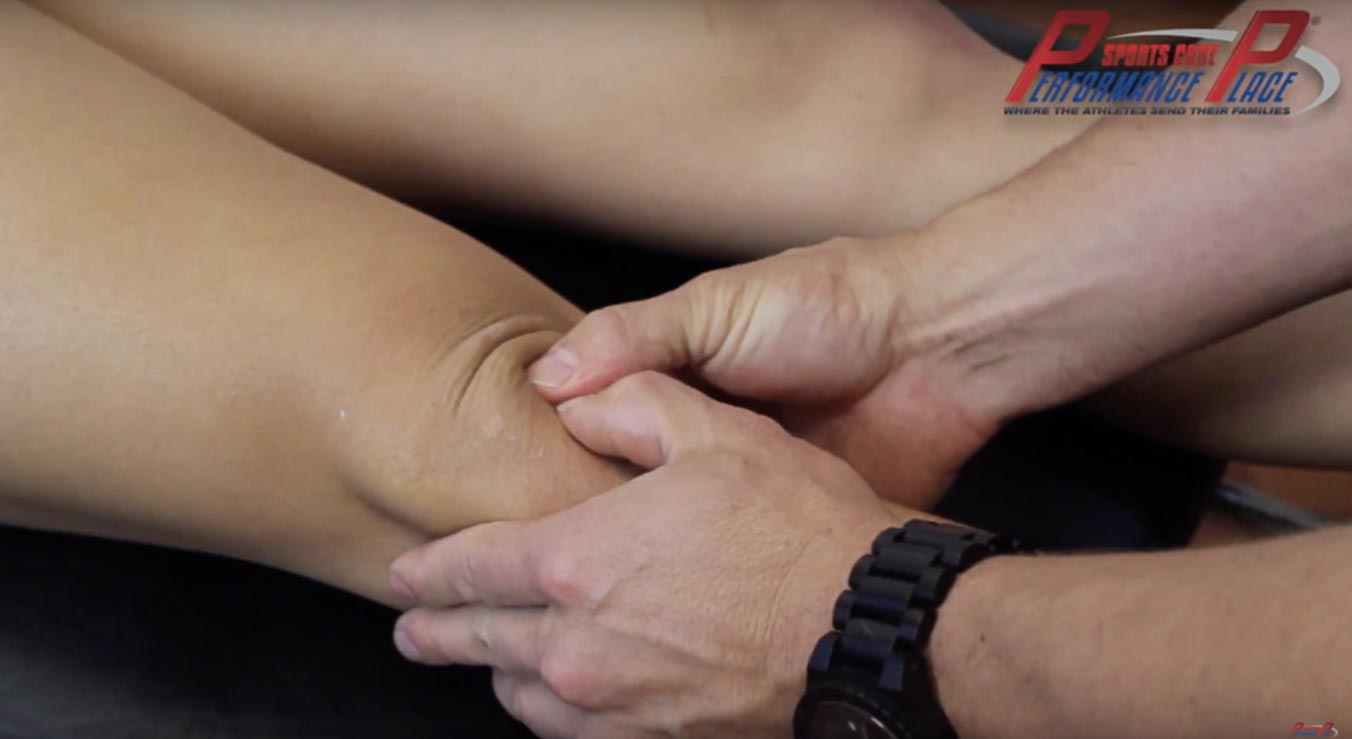
I’ve had runners come in after adding core training to their program.
I’ve had runners get injured after sustaining an injury at their day job.
Each case is unique, so we have to identify the reason for the injury.
- How do they sit?
- How do they sleep?
- What are their hobbies and habits outside of running?
Here’s the workflow:
- Identify the cause
- Confirm if the injury is functional or structural
- Confirm all joints have proper stabilization and mobility
- Identify the correct treatment/rehab tools for the job
I know it’s vague, but this is how it goes. The wrong tool for an injury will yield a slow recovery or may even make the person worse. Here’s some of the tools I use with my athletes:
- Joint Mobilization
- Immobilization
- Soft Tissue Mobilization
- Eccentric Exercise
- Postural Endurance
- Dynamic Mobility
- Nutritional Changes
- General Strength
- Plyometrics
- Movement Pattern Correction
- Co-contraction
- Appropriate selection of milage
- Appropriate selection of intensity
- Surface Consideration
- Footwear
- Athlete Goal Setting
- Co-management with coach, strength coach, etc.
It seems so simple when we write it down, but that’s the true challenge of working with an athlete, or any person for that matter. People don’t always follow recommendations. I’ve been working with athletes for years and have found that one of the largest barriers for compliance is education.
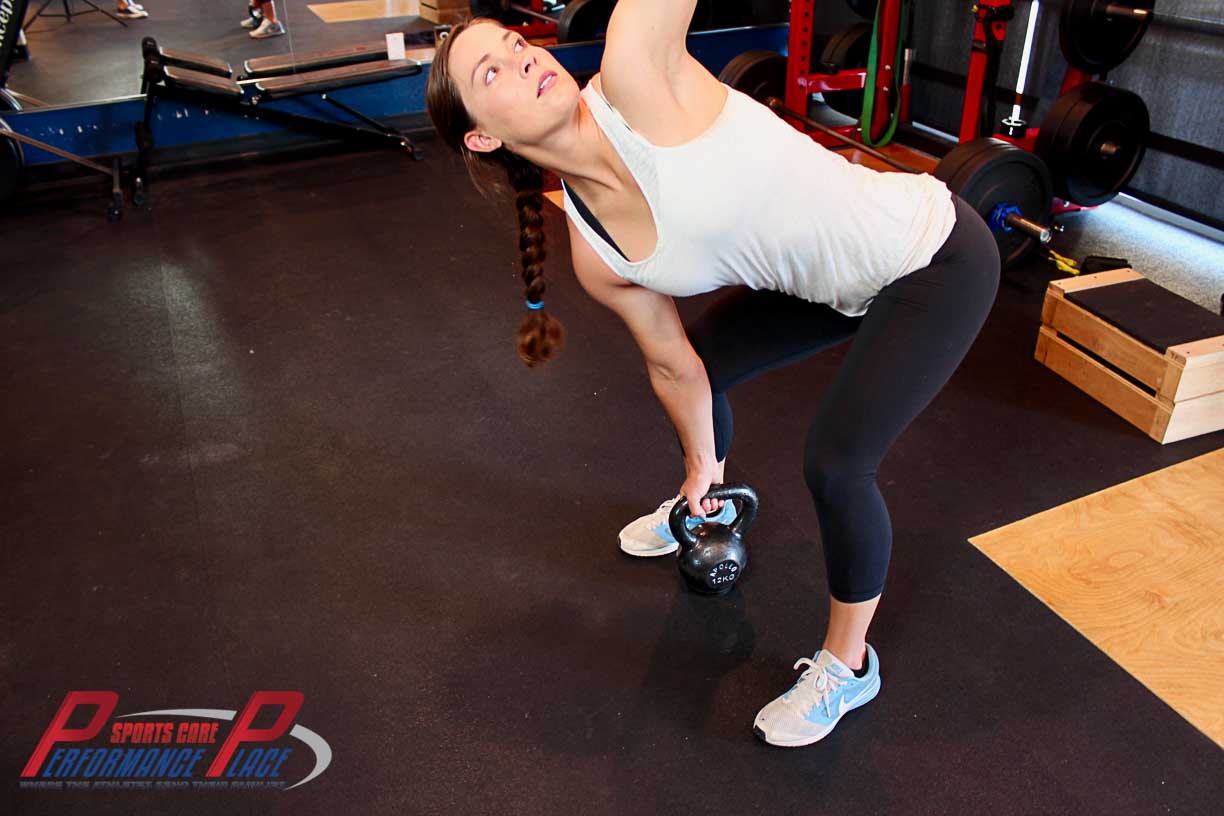
If you’ve made it to this part in this article, I’d like to commend you.
You’re an outlier!
Taking an interest in how your body works will allow you to make more educated decisions along your career. Imagine playing the stock market without knowing anything about it? It’s just plain negligent.
If you have more topics you would like hear about, please email me. I’m here to spread the good info!!
I’d like to acknowledge my good friend Dr. Richard Hansen DC, DACBSP®, CSCS for putting on an awesome seminar at the Sports Chiropractic Symposium in 2017. His presentation made this article, graphics and any correlated podcast/ videos possible. If you’re looking for an online running coach or a sports doctor in Denver CO, he’s your guy.
Several questions have come in lately on muscle cramping while running, especially later in runs. Personally, I used to think this was related to dehydration, lack of electrolytes, or other possible systemic reasons.
Many times, I’ve seen an athlete with unilateral leg muscle cramping while running, and regardless of distance, I tend to think it’s mainly a soft tissue problem, such as soft tissue fibrosis, tears, or weakness.

It seems this study points towards the lack of neuromuscular control, or neuromuscular fatigue, as a possible main factor in muscle cramping while running.
In fact, the study did not test moderate decreases in hydration levels, but instead tested severe and serious levels of dehydration in combination with moderate levels of electrolyte decrease and still found no correlation of these factors and muscle cramping while running.
Logic would tell me that we need to focus on improving the “endurance” of neurological control within the regions prone to muscle cramping while running in each athlete. How do we do this? That would be up to the fitness professional, but I’m sure it can be accomplished in a variety of ways. I feel it’s probably best accomplished by training the individual within a controlled environment and challenging those regions with activities that require a large amount of neurological control/input.
What we want is a powerful “scissor-like” motion from the side view.
One standard point of reference for this is where the trail leg knee is when the front foot contacts the ground. This knee should be well in front of the stance leg knee, on its way to an optimal height before it starts to extend and draw tension on the hamstring.

Running efficiency is mostly based upon conservation of motion and the ability to maximize the elastic properties of your muscles. It is not much different than some of the concepts of an electric car where energy is stored and then reused.
If the trail leg knee has not cleared the stance leg knee, we should expect less output at push-off and contraction of the lead leg hamstring as it begins the stance phase. Remember, as we mentioned in a prior posting, there is a direct relationship between the hip flexor of one side and the hamstring on the other side; each swing leg will affect the stance leg.
Get the swing leg knee forward quicker, with proper foot placement, and you will see an improvement in efficiency of the push-off leg and running overall.
However, you still need to have healthy muscles to do this. Muscles will need to be strong and elastic enough to store and transfer energy through proper running mechanics. Scar tissue and fibrosis from overuse and old age will decrease efficiency dramatically if not properly addressed.
At this point, we will use arm swing as the topic.
Everyone realizes that it’s natural for your arms to swing back and forth from the shoulders as you run, but does anyone understand why? How important is it that your arms are even moving in the first place? Again, everything is connected directly or indirectly and can either hinder or enhance your performance.
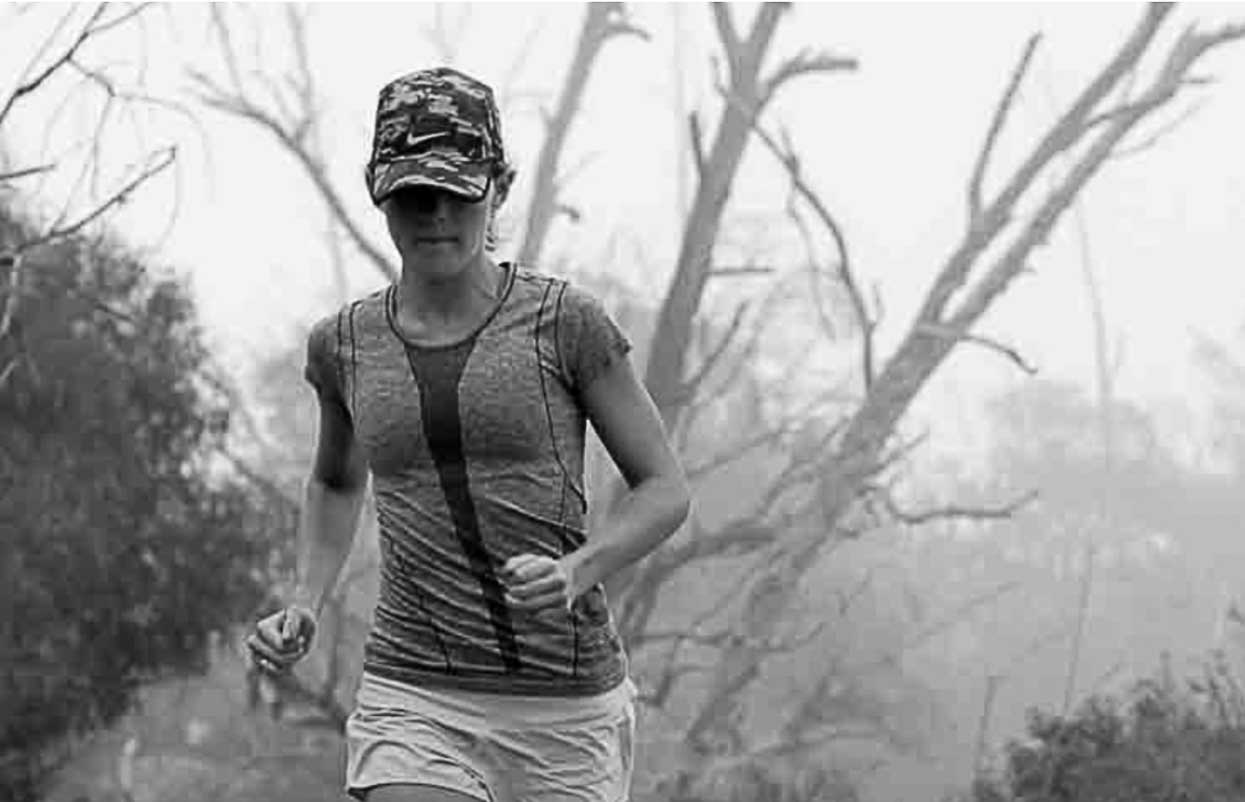
I know that was complex, but the main point is this sequence:
- Arm swing leads to activation and utilization of the core
- The core moves the pelvis
- The pelvis rotates in space around the femur (or thigh)
- The femur rotates, shortening the distance for maximum contraction of the glut max
- The glute contracts and the chain reaction continues down the lower body
Great question, and I have an answer.
First, the entire body is designed to function as the sum of each of its parts. Everything is interrelated. One muscle cannot function optimally, solely and/or independently of the others. There must be harmony between each group. In fact, kinetic dysfunction is often what we are looking for in gait or movement analysis with runners, cyclist, and golfers, as well as athletes in other team sports who’re experiencing problems.
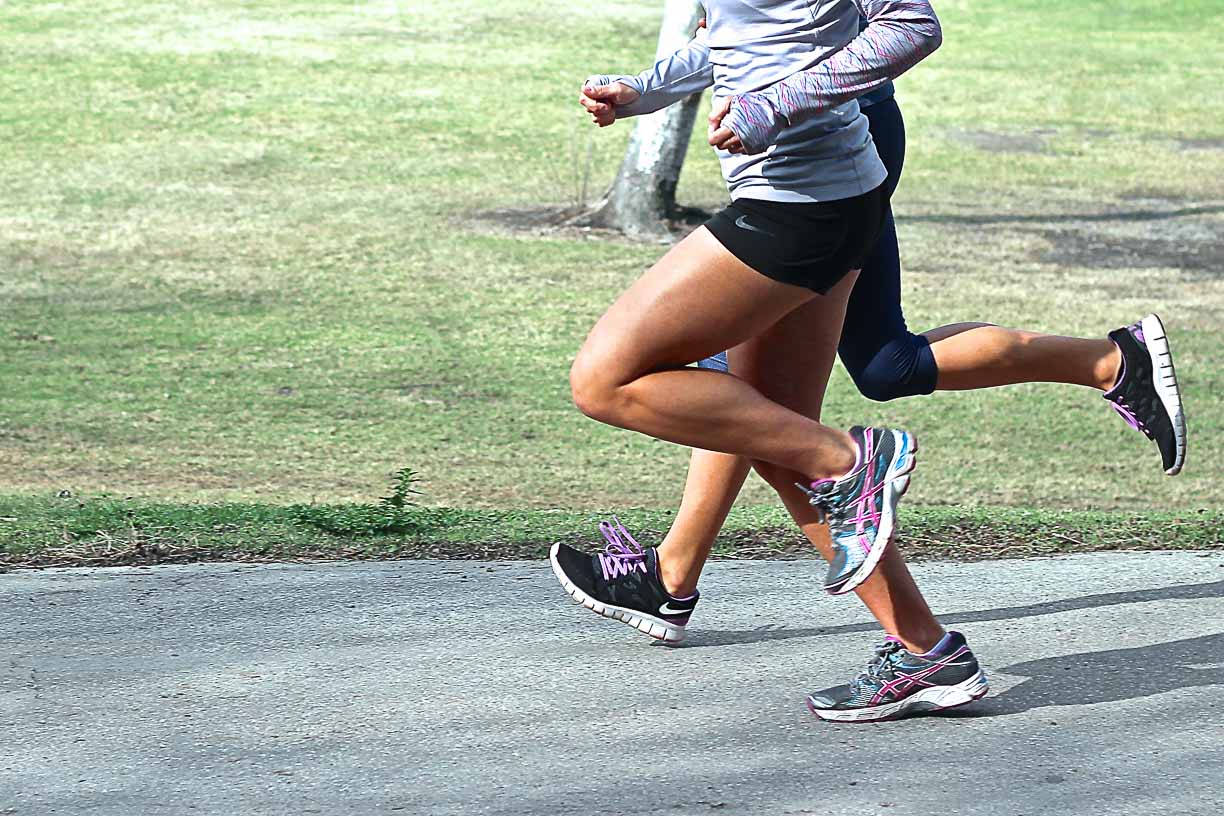
Running, by Frans Bosch, states the following about motion in the sagittal plane: (31)
“The dorsal muscles and the iliopsoas of the swing leg work to tilt the pelvis forward. The ‘prescribed’ angular velocity of the hip joint therefore decreases, so that the gluteus maximus can exert force at a lower speed of contraction.”
Without going into the real minutia of this statement, let’s just consider the overall meaning: the SWING LEG muscles have a direct effect on the STANCE LEG muscles. This shows an intimate relationship between the function of the muscles of the leg coming forward giving the muscles of propulsion the opportunity to do their job.
Their relationship is like a marriage.
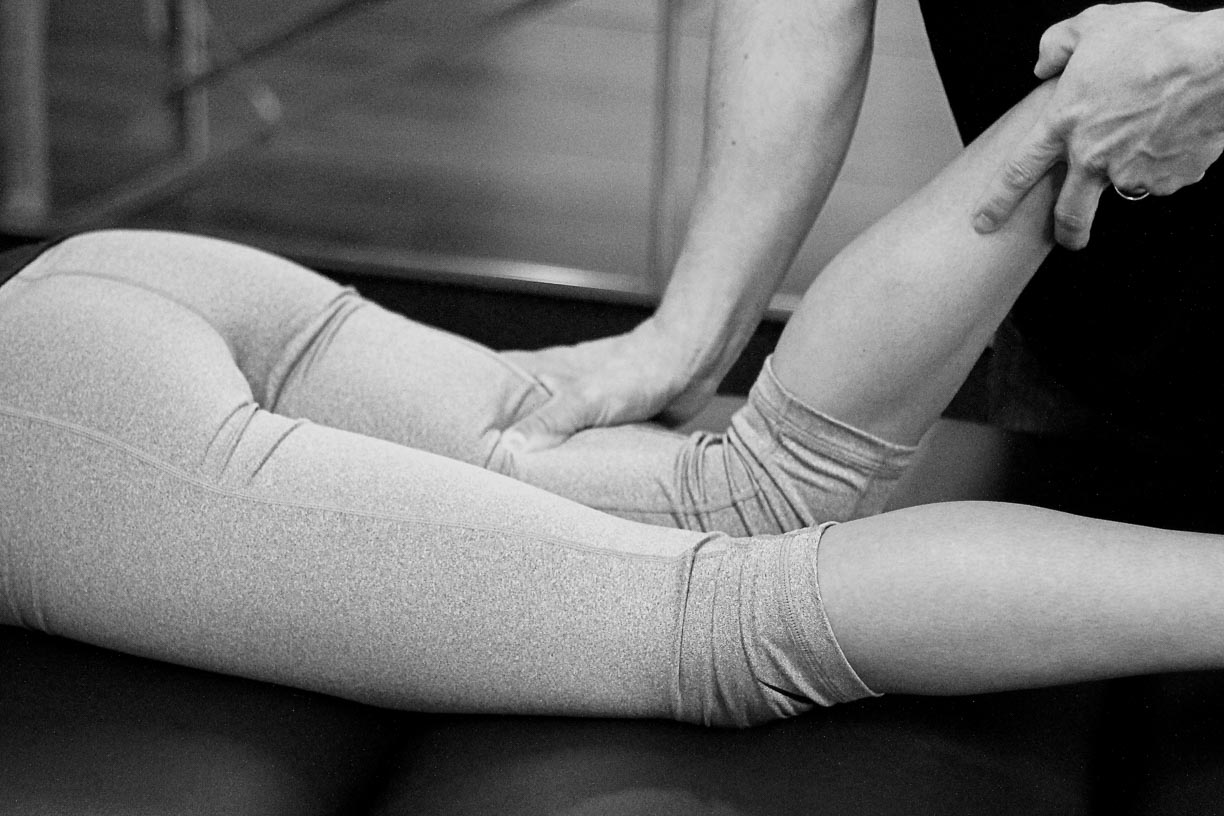
Essentially, all muscles have an elastic component, meaning they should be more like rubber bands than ropes. When muscles are overused and over-trained, they develop “rope-like” properties because scar tissue develops. This is process is normal, but not optimal.
Specific muscle work (targeted, not general foam rolling) is a great way to combat the loss of elasticity in your running muscles. In addition to muscle work, plyometrics training is a great way to train or re-educate the elastic properties of your muscles.
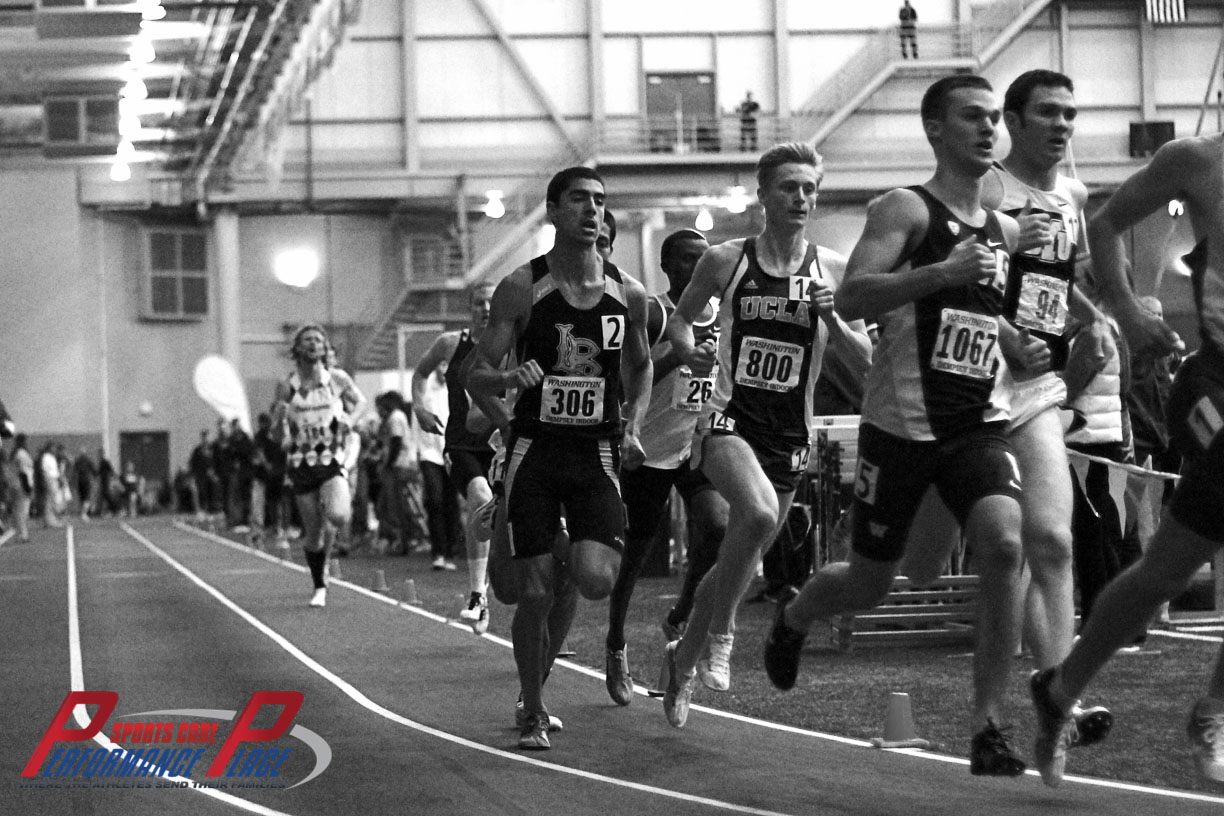
- Strength
- Endurance
- Speed
- Flexibility or Suppleness
Here’s a few random tips I took away from reading the book:
- One common running gait fault is excessive forward flexion of the trunk at high speeds, which can cause a decrease in the pre-stretch of the abdominals and hip flexors.
- The abdominals and hip flexors are primarily responsible for bringing the leg forward during swing phase and the majority of the work should be “passive” in nature by way of the elastic properties of the muscles.
- The rate of the swing phase (when the leg returns toward the ground) is directly related to contact time of the hind foot (which should be as brief as possible).
- Based upon this statement, a relative decrease in foot contact time can be attained by increasing the rate of the swinging leg.
- And one way to increase the rate of the swinging leg would be to increase the pre-stretch of the abdominals and hip flexors by keeping the trunk more erect and keeping these muscles healthy enough for storage of this elastic/potential energy.
Remember, performance in running is only optimal with the proper running mechanics and healthy muscles. Without either, you risk being an ineffective runner with quicker loss of energy and fatigue.
#2 Beattie K, Kenny IC, Lyons M, Carson BP. The effect of strength training on performance in endurance athletes. Sports Med 44(6): 845-865, 2014.
#3 Beattie, Kris, et al. “The effect of Strength Training On Performance Indicators in Distance Runners.” The Journal of Strength and Conditioning Research 31.1 (2017): 9-23
#4 Cormie R, McGuigan MR, Newton RU. Influence of strength on magnitude and mechanisms of adaptation to power training. Med Sci Sports Exerc 42(8): 1566-1581, 2010.
#5 Jones AM. The physiology of the world record holder for the women’s marathon. Int J Sports Sci Coach 1(2): 101-116, 2006.
#6 Noakes TD, Myburgh KH, Schall R. Peak treadmill running velocity during the VO2max test predicts running performance. J Sports Sci 8: 35-45, 1990.
#7 Nummela A, Keranen T, Mikkelsson LO. Factors related to top running speed and economy. Int J Sports Med 28(8): 655-61, 2006.
#8 Powers, et al. 2003??
#9 Shaw AJ, Ingham SA, Folland JP. The valid measurement of running economy in runners. Med Sci Sports Exerc 46(10): 1968-73, 2014.
#10 Wild J, Bezodis N, Blagrove R, Bezodis IA. Biomechanical comparison of accelerative and maximum velocity sprinting: specific strength training considerations. Strength Cond J, 21: 23-36, 2011.
#11 Hagberg, James M, et al. “Specific Genetic Markers of Endurance Performance and Vo2max.” Exercise & Sport Sciences Reviews, vol. 29, no. 1, Jan. 2001, pp. 15–19., file:///Users/sebastian/Downloads/Specific_Genetic_Markers_of_Endurance_Performance.4.pdf.
#12 Ramsbottom, R, et al. “Training Induced Physiological and Metabolic Changes Associated with Improvements in Running Performance.” Br J Sports Med, vol. 23, no. 3, Sept. 1989, pp. 171–176., www.ncbi.nlm.nih.gov/pmc/articles/PMC1478672/?page=1.
#13 Lake, M J, and P R Cavanagh. “Six Weeks of Training Does Not Change Running Mechanics or Improve Running Economy.” Med Sci Sports Exerc, vol. 28, no. 7, July 1996, pp. 860–869., www.ncbi.nlm.nih.gov/pubmed/8832540?dopt=Abstract.
#14 Vesterinen, V, et al. “Heart Rate Variability in Prediction of Individual Adaptation to Endurance Training in Recreational Endurance Runners.” Scand J Med Sci Sports, vol. 23, no. 2, Mar. 2013, pp. 171–180.
#15 Billat, V L, et al. “Interval Training at VO2max: Effects on Aerobic Performance and Overtraining Markers.” Medicine and Science in Sports and Exercise., U.S. National Library of Medicine, Jan. 1999, www.ncbi.nlm.nih.gov/pubmed/9927024?dopt=Abstract.
#16 Farrell, P A, et al. “Plasma Lactate Accumulation and Distance Running Performance.”Medicine and Science in Sports., U.S. National Library of Medicine, 1979, www.ncbi.nlm.nih.gov/pubmed/530025?dopt=Abstract.
#17 Crowther, Greg. “Training to Improve the ‘Big Three.’” Training to Improve the “Big Three”, Washington.edu, faculty.washington.edu/crowther/Misc/RBC/model2.shtml.
#18 Sjödin, B, et al. “Changes in Onset of Blood Lactate Accumulation (OBLA) and Muscle Enzymes after Training at OBLA.” European Journal of Applied Physiology and Occupational Physiology., U.S. National Library of Medicine, www.ncbi.nlm.nih.gov/pubmed/6213407?dopt=Abstract.
#19 Franch, J, et al. “Improved Running Economy Following Intensified Training Correlates with Reduced Ventilatory Demands.” Medicine and Science in Sports and Exercise., U.S. National Library of Medicine, Aug. 1998, www.ncbi.nlm.nih.gov/pubmed/9710865?dopt=Abstract.
#20 Denadai, Benedito Sérgio, et al. “Explosive Training and Heavy Weight Training Are Effective for Improving Running Economy in Endurance Athletes: A Systematic Review and Meta-Analysis.” SpringerLink, Springer International Publishing, 6 Aug. 2016, link.springer.com/article/10.1007/s40279-016-0604-z.
#21 de, C J, et al. “Stride Frequency in Relation to Oxygen Consumption in Experienced and Novice Runners.” European Journal of Sport Science., U.S. National Library of Medicine, www.ncbi.nlm.nih.gov/pubmed/23581294?dopt=Abstract.
#22 Moore, Isabel S, et al. “The Pursuit of Improved Running Performance: Can Changes in Cushioning and Somatosensory Feedback Influence Running Economy and Injury Risk?”Taylor & Francis, Footware Science, www.tandfonline.com/doi/abs/10.1080/19424280.2013.873487.
#23 Craighead, D H, et al. “A Novel Running Mechanic’s Class Changes Kinematics but Not Running Economy.” Journal of Strength and Conditioning Research., U.S. National Library of Medicine, Nov. 2014, www.ncbi.nlm.nih.gov/pubmed/24736769?dopt=Abstract.
#24 Divert, C, et al. “Barefoot-Shod Running Differences: Shoe or Mass Effect?” International Journal of Sports Medicine., U.S. National Library of Medicine, June 2008, www.ncbi.nlm.nih.gov/pubmed/18027308?dopt=Abstract.
#25 Halvorsen, K, et al. “Acute Effects of Reducing Vertical Displacement and Step Frequency on Running Economy.” Journal of Strength and Conditioning Research., U.S. National Library of Medicine, Aug. 2012, www.ncbi.nlm.nih.gov/pubmed/22027846?dopt=Abstract.
#26 Moore, I S, et al. “Mechanisms for Improved Running Economy in Beginner Runners.”Medicine and Science in Sports and Exercise., U.S. National Library of Medicine, Sept. 2012, www.ncbi.nlm.nih.gov/pubmed/22525760?dopt=Abstract.
#27 Arellano, C J, and R Kram. “Partitioning the Metabolic Cost of Human Running: a Task-by-Task Approach.” Integrative and Comparative Biology., U.S. National Library of Medicine, Dec. 2014, www.ncbi.nlm.nih.gov/pubmed/24838747?dopt=Abstract.
#28 Hinrichs, Richard. “Upper Extremity Function in Running. II: Angular Momentum Considerations.” International Journal of Sport Biomechanics, Human Kinetics, journals.humankinetics.com/doi/abs/10.1123/ijsb.3.3.242.
#29 Gisselman, A S, et al. “Musculoskeletal Overuse Injuries and Heart Rate Variability: Is There a Link?” Medical Hypotheses., U.S. National Library of Medicine, Feb. 2016, www.ncbi.nlm.nih.gov/pubmed/26826630.

